

Bird Watching in Ireland: A Bird Lover’s Paradise
By: Author Emer Walker
Posted on Last updated: October 4, 2023
Ireland is a superb place to go bird watching.
Regardless of whether you are a complete beginner with an interest in birds, or a passionate birder there are plenty of great opportunities.
These include seeing common birds in a wide range of habitats, or even observing rare birds, if you happen to be at the right place at the right time.
This post may contain affiliate links. If you click on one of them, we might receive a small commission (at no extra cost to you). Thanks for your support!
Table of Contents
- 1 Irish Birding
- 2 Birds of Ireland
- 3 Why is Ireland good for bird watching?
- 4 Bird Watching Habitats in Ireland
- 5 When is the best time to go birdwatching in Ireland?
- 6 Where can I watch birds in Ireland?
- 7 Bird Watching Dublin Locations
- 8 Bird Watching East Coast of Ireland
- 9 Bird Watching West Coast of Ireland
- 10 Bird Watching South Coast of Ireland
- 11 Midlands Ireland Birdwatching
- 12 Bird Watching Northern Ireland
- 13 Bird Watching in Ireland FAQ
- 14 Irish Birds
Irish Birding
Ireland is a popular place for Irish birders, as well many international birders are also drawn to the country for its unique birding opportunities.
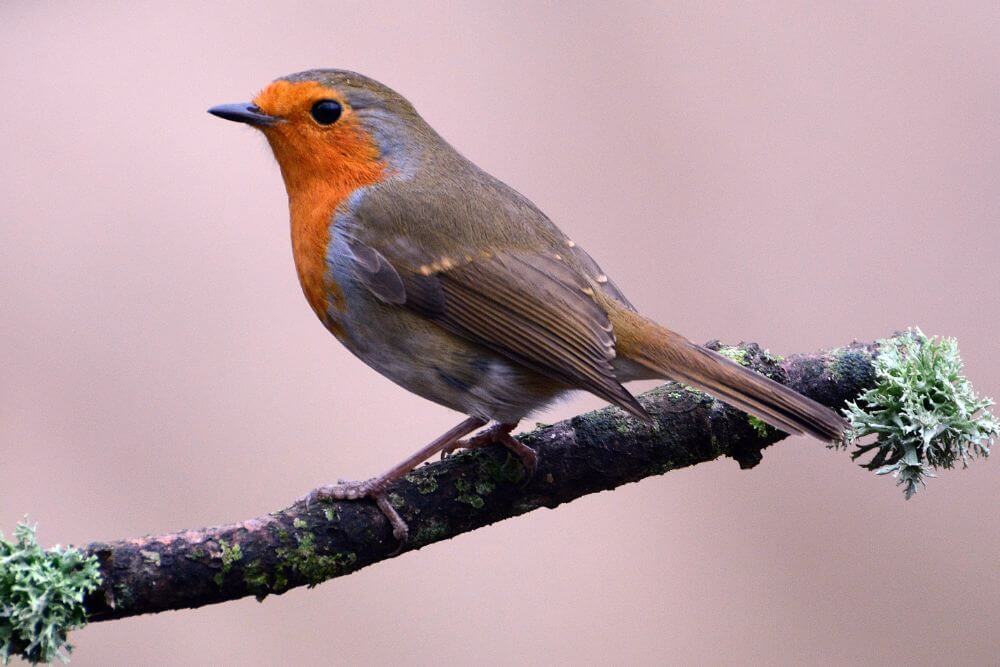
So regardless of whether you want to bird watch the common birds in Ireland from the comfort of your own garden or want to explore the many different species of both land and sea birds that are sighted in Ireland each year, Ireland will not disappoint.
Birds of Ireland
The Irish Rare Birds Committee report keeps track of all the species sighted in Ireland. At present, there are thought to be roughly about 490 different species sightings. ( Common and Rare Bird Sightings Ireland Report from 2019 )
While Ireland as a somewhat isolated island on the edge of Europe may not have a particularly big list of breeding bird species, the western location of Ireland in relation to many migratory routes and its mild weather conditions also bring other avian visitors to the shores.
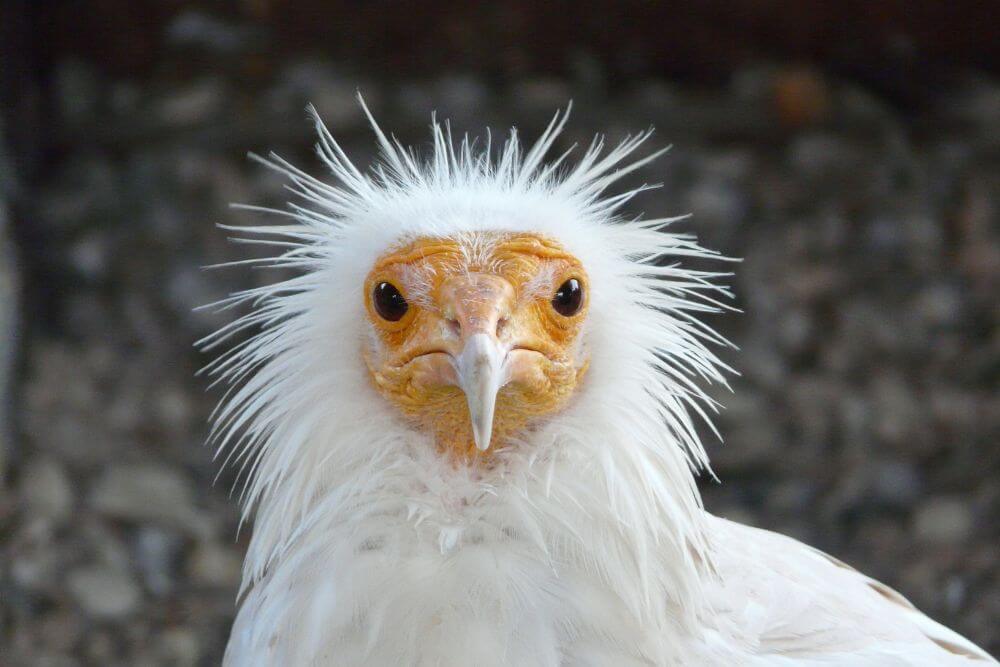
Irish rare bird sightings can cause great excitement within the birding communities. Some of the rare birds that occasionally turn up in Ireland are particularly special and sought after by birdwatchers. This is particularly true of Twitchers.
(Twitchers are best described as a subgroup of birders who will drop everything and travel, sometimes even long distances, to the place where a rare bird was sighted on the off chance that they might be able to catch a glimpse of this rare bird too.)
Why is Ireland good for bird watching?
The combination of Ireland’s location on the west of Europe and mild climate makes it a superb location for bird watching. In addition, Ireland has many different suitable biodiverse habitats that provide both food and shelter to the resident and migratory birds.
Many migratory seabirds and shorebirds travel long distances and use Ireland as a transit point on their journeys. These passage migrants avail of the good feeding opportunities that are found in the coastal areas. Once they have refueled, they travel onwards on their journey.
Climatic conditions in Ireland mean that the winters are rarely very cold, with only occasional snow and freezing temperatures . This keeps the ground cover free and soft, which enables wildfowl and wintering birds to avail of the rich food supplies in the wetlands, lakes, marshes and tidal estuaries.
Bird Watching Habitats in Ireland
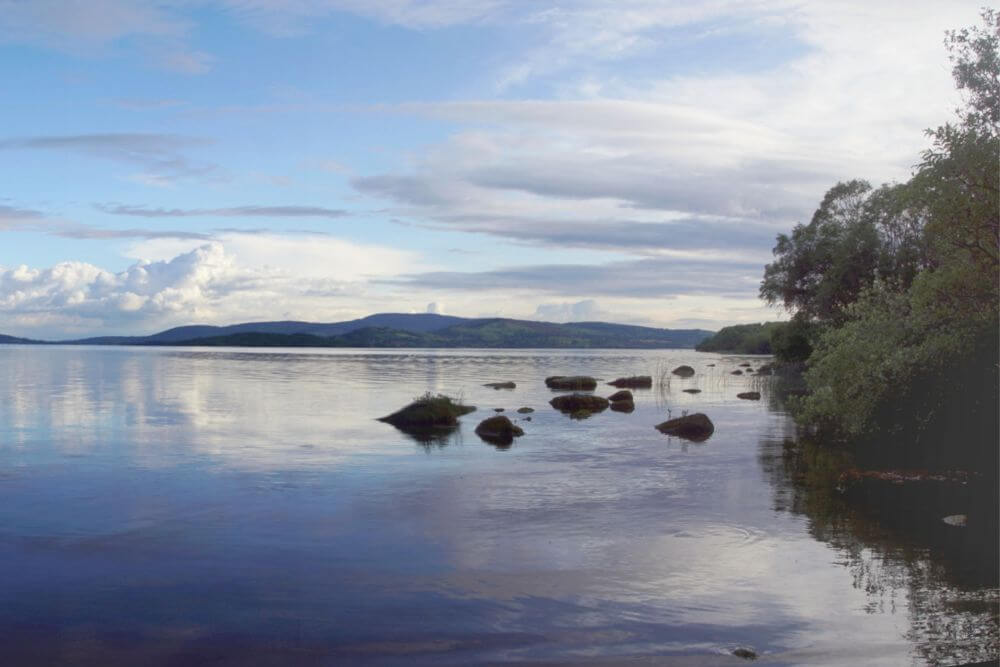
Irish coastal birds enjoy a wealth of habitats. These include mudflats , tidal estuaries , marshes , rocky cliffs , rugged shorelines , sandy beaches and dunes habitats , which are attractive to many different resident and migratory bird species.
In addition, there are also offshore seabird colonies on the smaller islands. Some of these islands, like the Little Skellig are uninhabited and seabirds can breed without human disturbance.
Irish lakes , wetland areas and rivers are ideal habitats for birding.
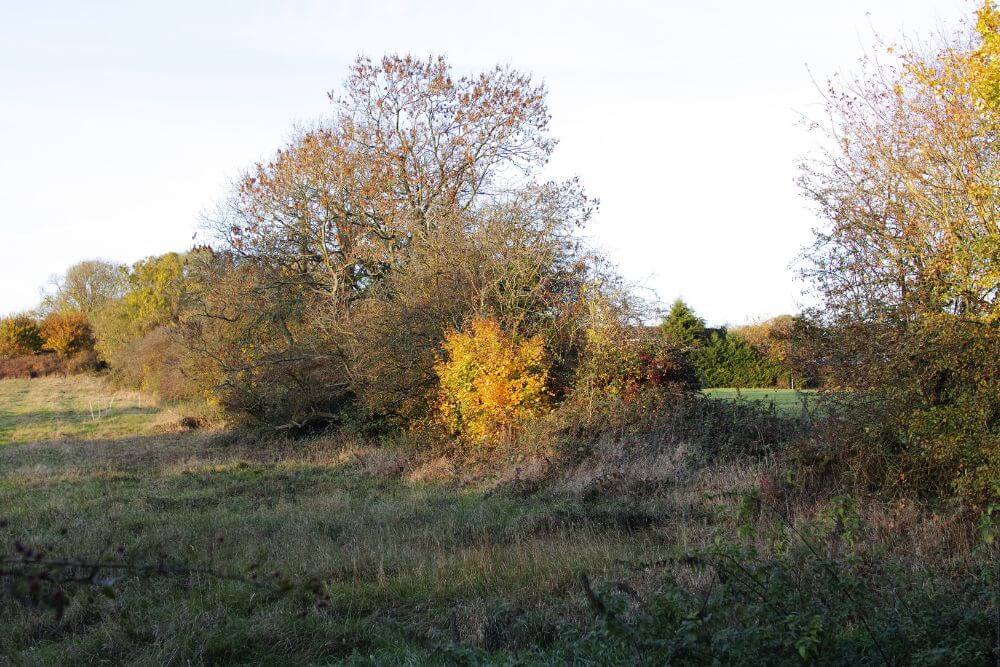
The hedgerows found throughout much of the Irish countryside are exceptionally important for birds, as well as biodiversity in general (Find out more about trees and hedgerows here ). Hedgerows provide shelter and food for birds like Robins, Blackbirds, Wrens and many more species throughout much of the year.
Woods , fields , meadows, as well as the bogs and mountainous areas are home to other bird species.
When out birding in Ireland, birders not only get to enjoy observing bird species, but while hiking around the countryside they get to experience the great diversity of stunning landscapes that Ireland has to offer. (Often relatively undisturbed by other people!)
When is the best time to go birdwatching in Ireland?
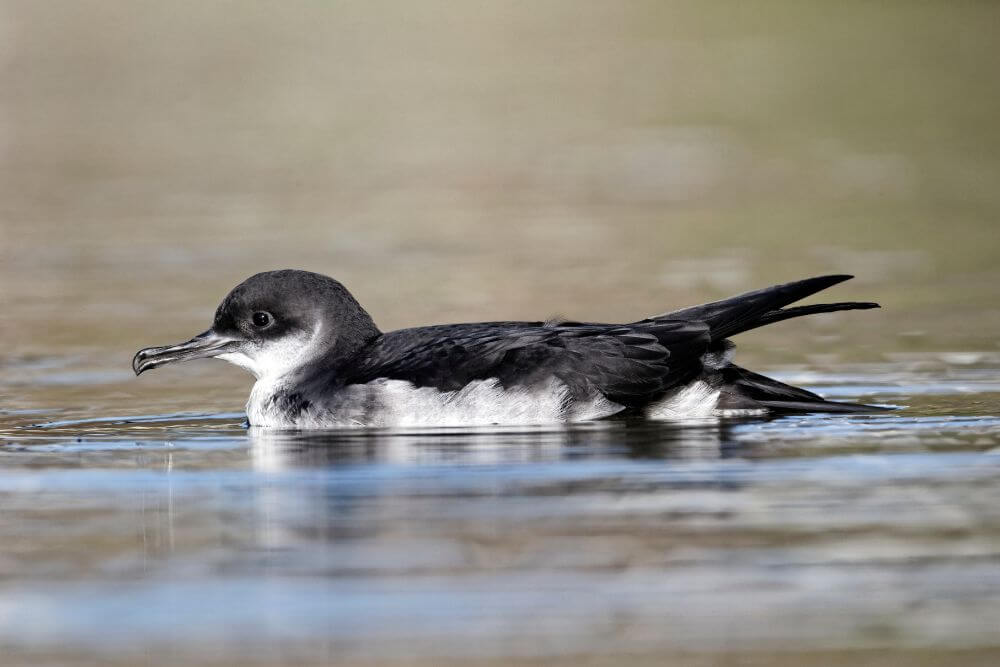
Bird watching in Ireland can be a fun rewarding experience throughout the year. The best time to see some of the many migratory birds often stopover in Ireland in spring and autumn on route to the summer or winter feeding grounds.
Also note that some birds tend to fly at night during their migration as this helps them escape some of their predators and allows them to focus on foraging and refueling during the precious daylight hours.
Birds can be attracted to the lights from lighthouses which signal to them that land is near. Headlands with lighthouses (Hook Head for example) or other areas near lighthouses (Cape Clear is not too far away from the Fastnet Rock) can act as beacons for migrating birds.
Wind and Weather
Weather plays a big part in bird watching. Birds sometimes tend to rest during inclement weather if possible and become active again once the weather improves. If you go out bird watching after such weather (particularly in spring and autumn) you might increase your chances of seeing some rare species.
Also keep an eye on the wind forecast . When the wind is blowing in the same direction as the birds are flying, this might increase your chances of seeing some of the migrants.
(As with all outdoor activities, especially ones near the coast, cliffs or water, please pay particular attention to safety at all times!)
Spring Bird Watching Ireland
In spring, the south and east coast of Ireland tend to be the areas where the birds meet landfall first on their migratory routes. Some sightings are also recorded along the west coast of the country as well.
Headlands and islands around Cork, including Cape Clear , are good choices if you want to catch these migratory birds making landfall. Further east towards Waterford and Wexford, there are also places including the East Coast Nature Reserve (County Wexford) that receive temporary visitors at this time of year.
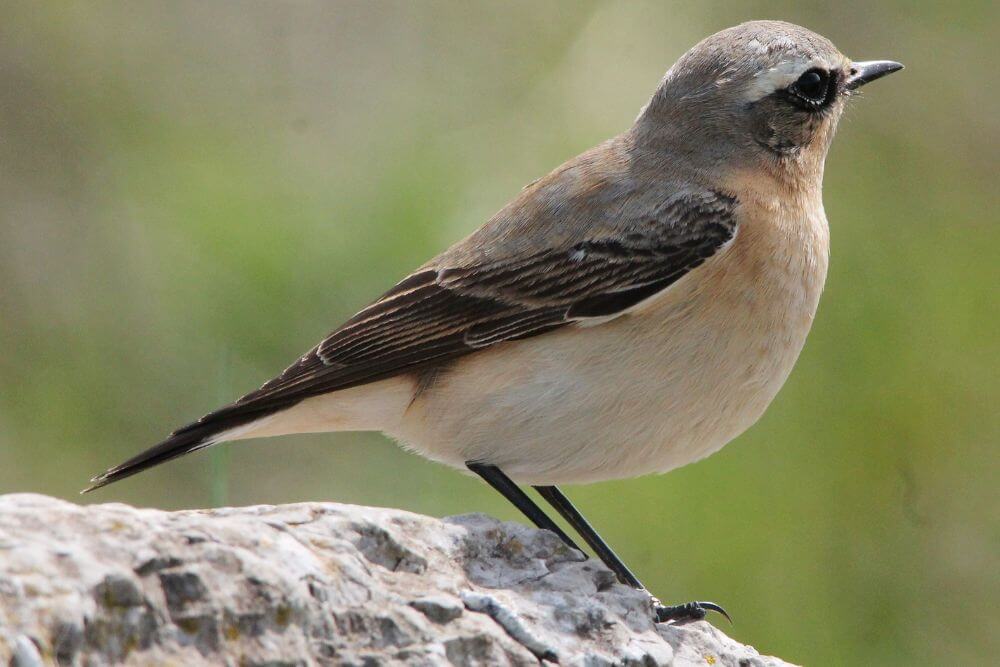
Birds such as Wheatears tend to be among the first to arrive. These are followed by the likes of the Warblers, such as the Chiffchaffs who seek warmer climates of the Mediterranean during winter. April is usually when the first Swallows appear after completing their migration from South Africa.
One of the best times to see raptors is in early April, at the start of the mating season, when birds, like the Hen Harrier , perform their famous skydance as part of the courtship rituals. Other mating rituals, such as the impressive water ballet performed by the Great Crested Grebe is also a sight to behold!
Summer Birdwatching Ireland
Bird watching in Ireland during the summer can be a very enjoyable experience. The weather alsolikely to be a bit better than spring or autumn (well, maybe!).
This is the time when it is best to head to the coast and try to observe some seabirds . Many of these can be viewed without the need to take to the water in a boat. These locations include Howth Head and the Cliffs of Moher , for example.
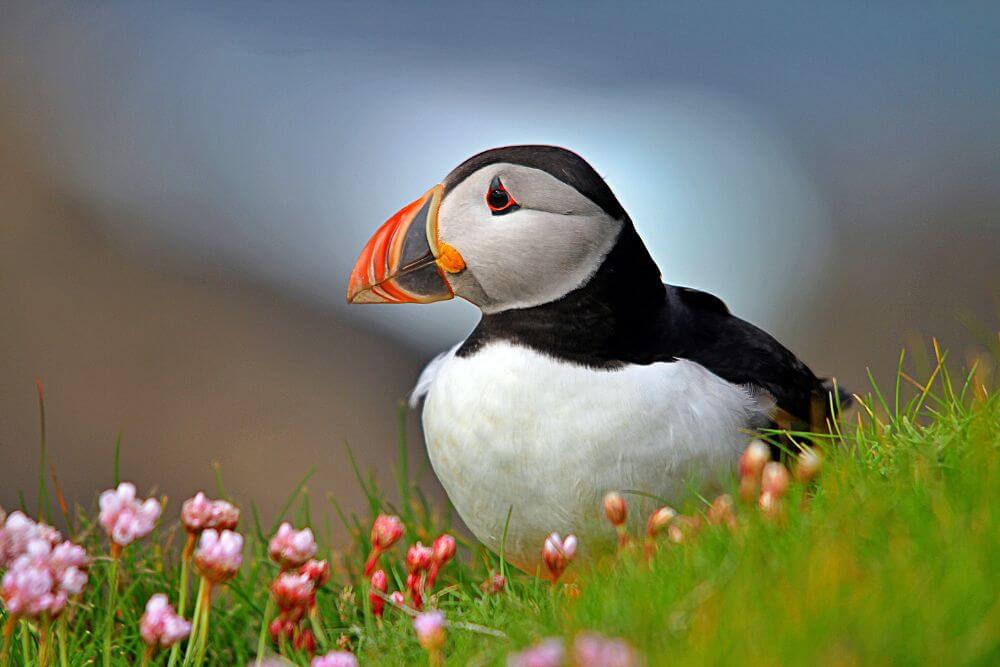
For a better view of some of the seabird colonies, then it is best to get a boat tour either around or to some of the islands off the coast. The Skellig Islands , off the coast of Kerry (famous for its early Christian monastic site and use as a Star Wars filming location ), is well worth a visit for many reasons. The sheer number of nesting birds on the Skelligs makes it particularly special and important. It is one of the biggest Gannet colonies in the world .
If you prefer to stay away from the coast, there are many other good birding places to visit. Lucky birders in the Midlands ( Shannon Callows) or on Tory Island in County Donegal might hear the rare sound of the endangered Corncrake . (During the summer when the grass is high, it is difficult to actually see these birds in the meadow vegetation.)
Autumn Bird Watching Ireland
Autumn is once again a very busy time in the Irish birders calendar. From about mid-August the first migrating birds depart Ireland, mostly heading in a southerly direction. This can continue until about late October.
All of the migratory adult birds and their juvenile offspring make these incredible journeys. The number of birds migrating is therefore considerably more than in spring time for the return journey.
Around the same time, the first winter migratory birds arrive in Ireland. These include the wading birds from North Europe, such as waders from Iceland and Greenland. The eastern and southern coast of Ireland receives large numbers of waders , so the best chances of seeing them is to head to the mudflats and estuaries .
Some Pipits and Finches that one might recognise from garden bird watching also migrate to warmer areas for the winter. Headlands on the western and southern coast of Ireland once again provide good opportunities to see these birds depart.
American Vagrants
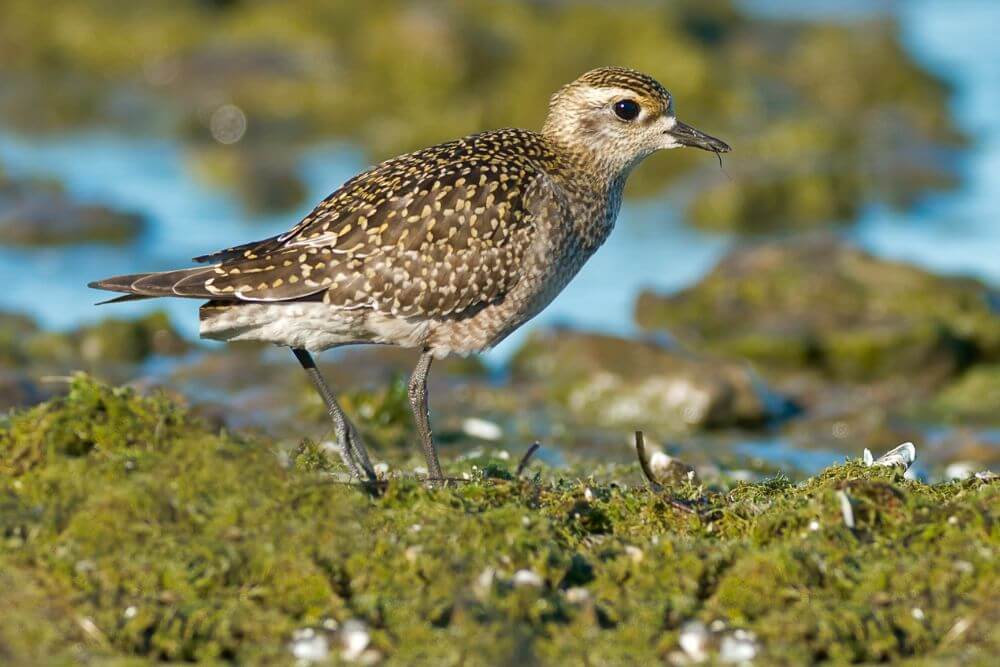
Early September to mid-October is one of the best times to catch some odd vagrants from North America that sometimes get blown in this direction as a result of storms in the Atlantic. In fact it is somewhat surprising that they can survive at all, given the combinations of suitable weather and fat reserves that these birds need.
Species such as the American Golden Plover and Lesser Yellowlegs are seen more regularly, but there are the occasional surprises with more rare species like Killdeer or Greater Yellowlegs .
Winter Bird Watching Ireland
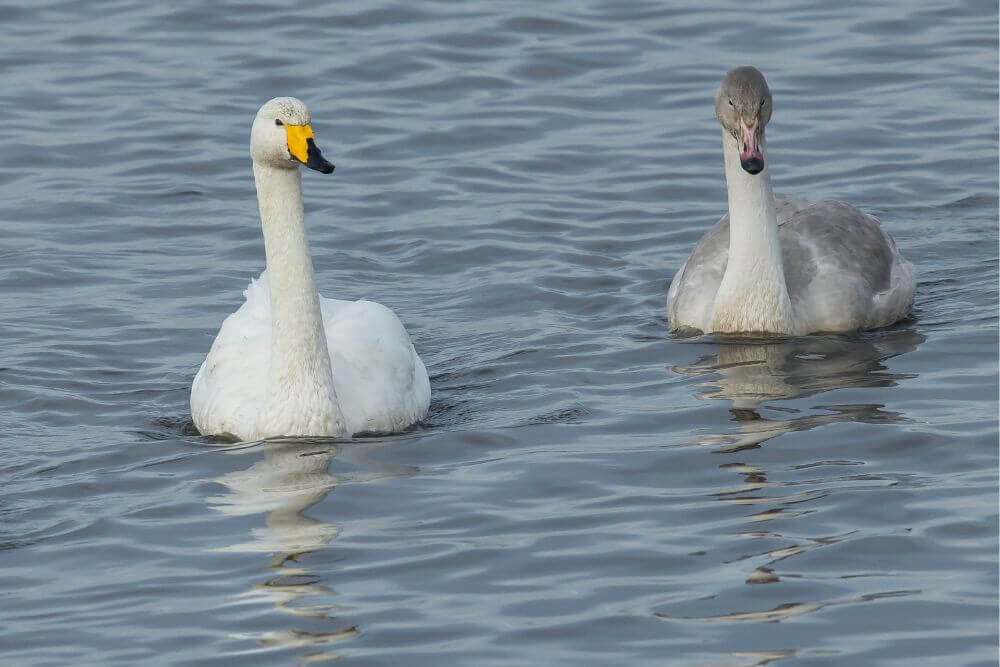
Ireland in winter is a particularly attractive place for many bird species. The damp, yet mild winters ensure that there is a good supply of food, even through the harsher months.
Waders and other waterfowl, as well as passerine species from further north come to Ireland during the winter.
Bellied Brent Geese travel from Canada and Greenland to make Ireland their winter home and can often be out feeding.
Many White-Fronted Geese flock to the Wexford Wildfowl Reserve during the winter, which is also where swans, such as the Whooper Swan and Bewick’s Swan , can be seen.
Winter is a great time to visit Ireland if you have a particular interest in gulls too, with many different species gracing our coasts. The fishing town of Killybegs or the harbor area in Galway are just some of the places where you can see some of the common, as well as rarer species.
Where can I watch birds in Ireland?
Ireland has lots of great locations to watch birds. Many people interested in birdwatching start by simply observing birds in gardens , parks , woodlands and estuaries . They then progress onto some of the other well known bird watching locations, especially if they are hoping to catch some rarer birds at particular types of the year.
Best Places for Bird Watching in Ireland
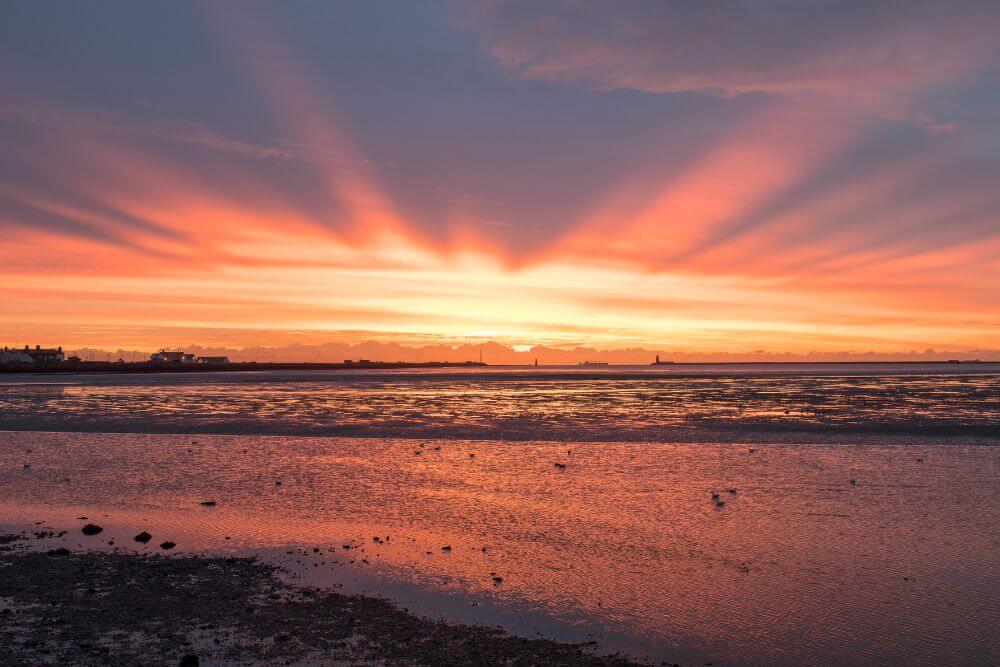
The best place for bird watching depends on the time of year, weather and what you are hoping to see.
Here are some of the best bird watching places in Ireland:
- North Bull Island National Nature Reserve
- Bridges of Ross, County Clare
- Wexford Wildfowl Reserve
- Cape Clear Island, County Cork
- The East Coast Nature Reserve, County Wicklow
There are however plenty more great locations scattered across the country!
Bird Watching Dublin Locations
North bull island national nature reserve, county dublin.
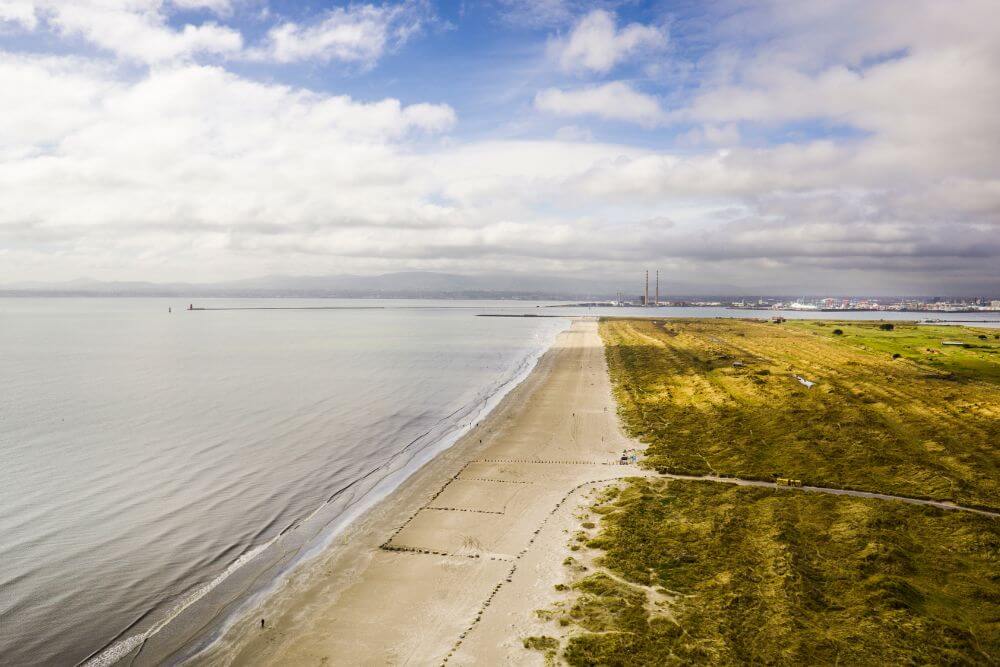
This bird watching location is one of the most popular in the country as it has a wide variety of bird species throughout the year and is very accessible to many being located in Dublin Bay on the outskirts of Dublin City.
Bull Island Nature Reserve is a National Bird Sanctuary. In fact, it was the first area to be designated with this status back in 1931.
With the 5km long sandy beach , Dollymount Strand, backed with sand dunes on one side of the island, and mudflats and a saltmarsh on the other, this tidal complex is a haven for waders, wildfowl and other wildlife .
The dune habitat is also home to many other species of bird, including birds of prey such as Kestrels , Peregrine Falcons and Merlins , and the occasional Short-Eared Owl . These species hunt the wading birds during winter months.
This is a tidal area, please take all the necessary care required in this environment. Do not walk out into the mudflats as this can be dangerous and it is also likely to harm wildlife .
Howth Head, County Dublin
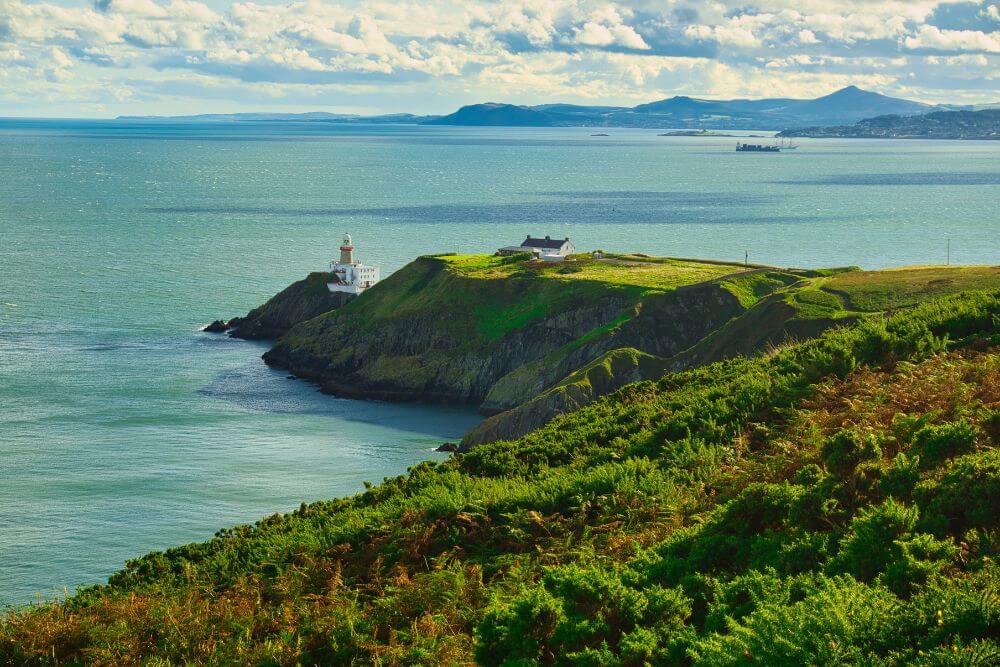
Howth Head, on the northside of Dublin, is another great location for birding within easy reach from Dublin. Seabirds such as the Ganets , Guillemots , Razorbills and Fulmars are just some of the species that are regularly seen nesting in and around the cliff areas.
While it is tempting to keep your eyes on the cliffs, don’t forget to look in the vegetation and scruby areas on Howth Head as well, for this is where you will catch other bird species, such as Linnets, Meadow Pipits, Whitethroats for example.
If you are in the Howth Head Cliff Walk area, it might also be worth checking out some other bird watching nearby including Howth Harbour , as well as the small island called Ireland’s Eye (ferry boat trips available). Broadmeadows in Swords is also a good nearby birding location.
Bird Watching East Coast of Ireland
Wexford wildfowl reserve, county wexford.
The Wexford Wildfowl Reserve is a very popular birding spot in Ireland . A range of habitats found here including wet grassland , reed beds , sandbars and mudflats . This area is of particular importance for migratory waterfowl in winter as it provides a place to forage, feed and rest.
Large numbers of Greenland White-Fronted Geese , Brent Geese , Whooper Swans , ducks such as Teal and Wigeon and many waters are found here during the winter months.
Impressive birds of prey, such as Peregrine Falcons , Kestrels and Sparrowhawks are also seen here.
East Coast Nature Reserve, County Wicklow
The East Coast Nature Reserve in County Wicklow is a protected area that is home to many waterfowl particularly in winter, but there are also many other species found here including Kingfisher , Curlew , and Little Egret .
The area was once intensively managed for agriculture, but thanks to the efforts of BirdWatch Ireland and several EU funded initiatives, the site has been transformed into fen (rare calcareous fen), wet grassland and woodland habitats . These different habitats are not only home to species of bird such as the Reed Bunting and Water Rail , but also many invertebrates, such as dragonflies and many species of butterflies and frogs as well.
More information about this amenity can be found here .
Saltee Islands
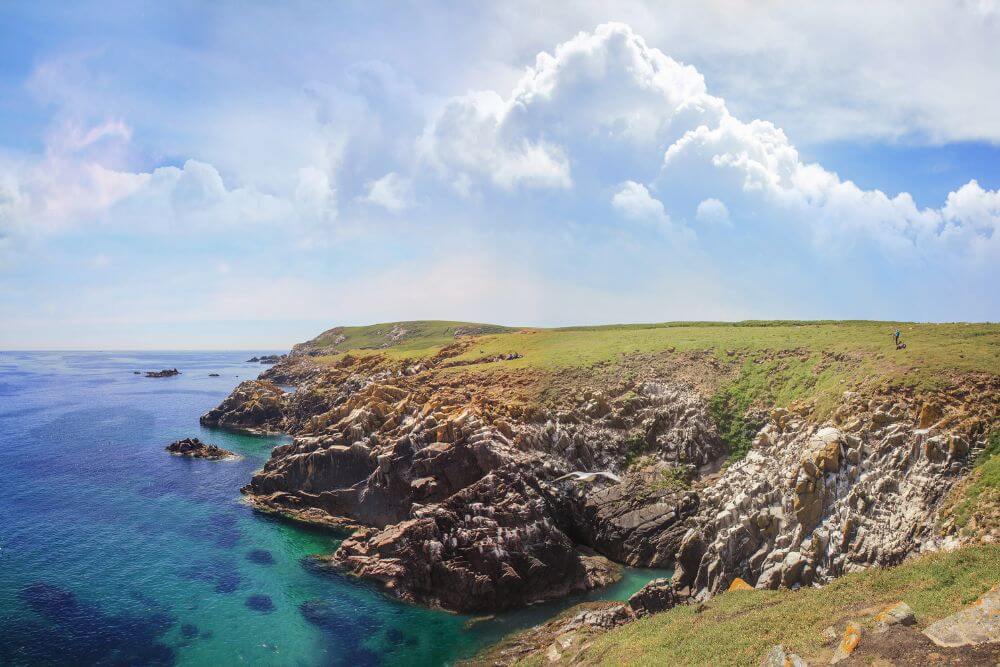
The two Saltee Islands ( The Great Saltee and Little Saltee Islands ) off the coast of Wexford are protected habitats and very important bird sanctuaries. The mudflats , as well as sandy areas on the islands attract many species of seabirds, including Razorbills , Shags , Gannets and Kittiwakes . Gray seals also breed on the Great Saltee island.
It is possible to visit the Great Saltee for day trips . Ferry boats depart from Killmore Quay). The island is privately owned and all visitors must leave by 16.30 each day.
Due to dangerous landing conditions, it is not possible to visit the Little Saltee Island.
Bird Watching West Coast of Ireland
Bridges of ross county clare.
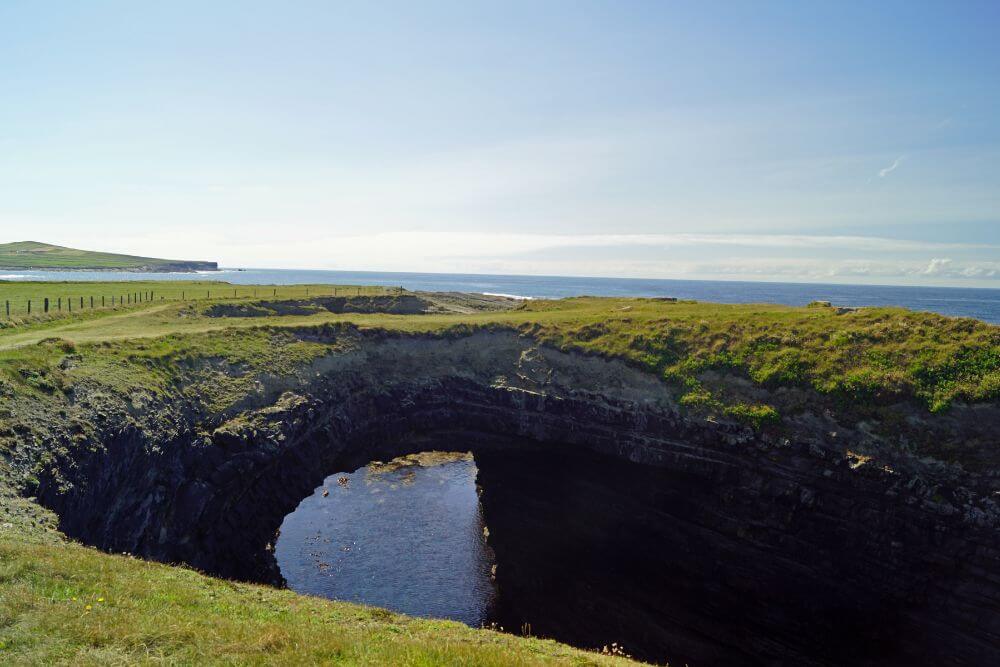
Clare birdwatching spots are some of the best in the country.
A visit to the Bridges of Ross in County Clare is particularly worthwhile in late summer and early autumn.
This area of coast is an excellent place to sea-watch the migratory seabird s during late summer and early autumn as they very often just pass overhead. Even if you are not lucky enough to catch a sight of many birds, the views of the Atlantic Ocean and Western Coast are very impressive.
This unusual highlight on the Wild Atlantic Way is not necessarily one of the best known along the west coast, but is a good spot to explore if you are heading in the direction of Loop Head .
Did you know? The Bridges of Ross once referred to three sea arches along the Clare coast, located not far from Kilbaha. Two of these arches no longer exist, but the name of the bridges has stuck.
Cliffs of Moher
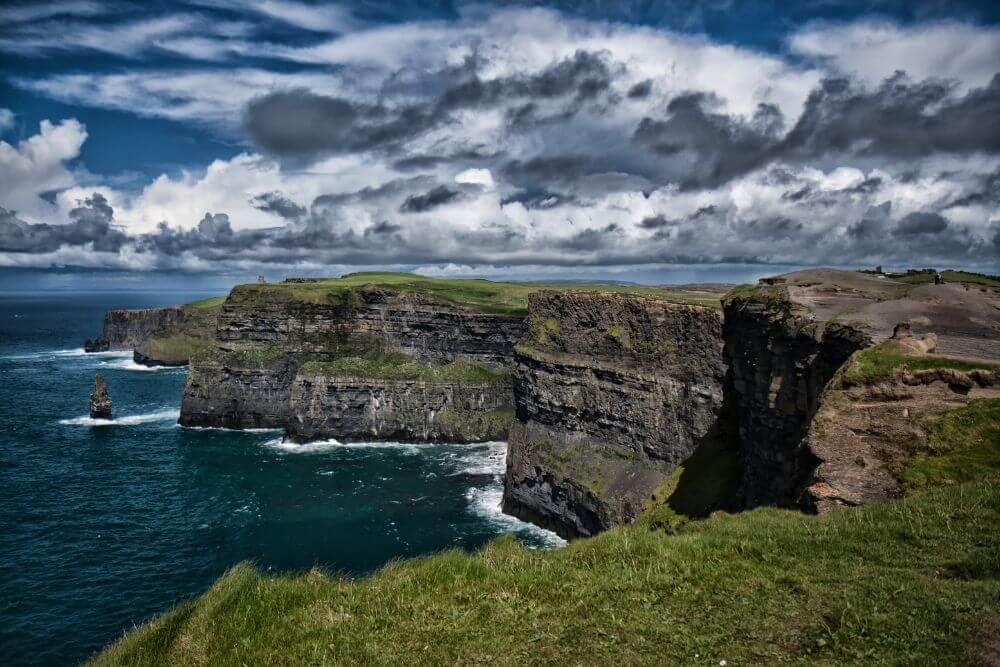
The Cliffs of Moher are one of the most visited attractions in Ireland . While most people only tend to marvel at the cliffs, others come to see the impressive seabird colonies that nest there including Guillemots , Fulmar , Razorbill and Kittiwake .
Not only the cliffs themselves are important for the birds, but the grassland areas on the clifftop too where you might see the odd Kestrel hovering for its prey, or if you are lucky a Chough .
For bird watchers, the best time to visit the Cliffs of Moher is between May and August to see them in their full glory.
As one of Ireland’s prime filming locations, the Cliffs of Moher also featured in Harry Potter .
Puffin Watching Ireland – Did you know? The largest colony of Puffins in Ireland is found at the Cliffs of Moher.
Bird Watching South Coast of Ireland
The skellig islands.
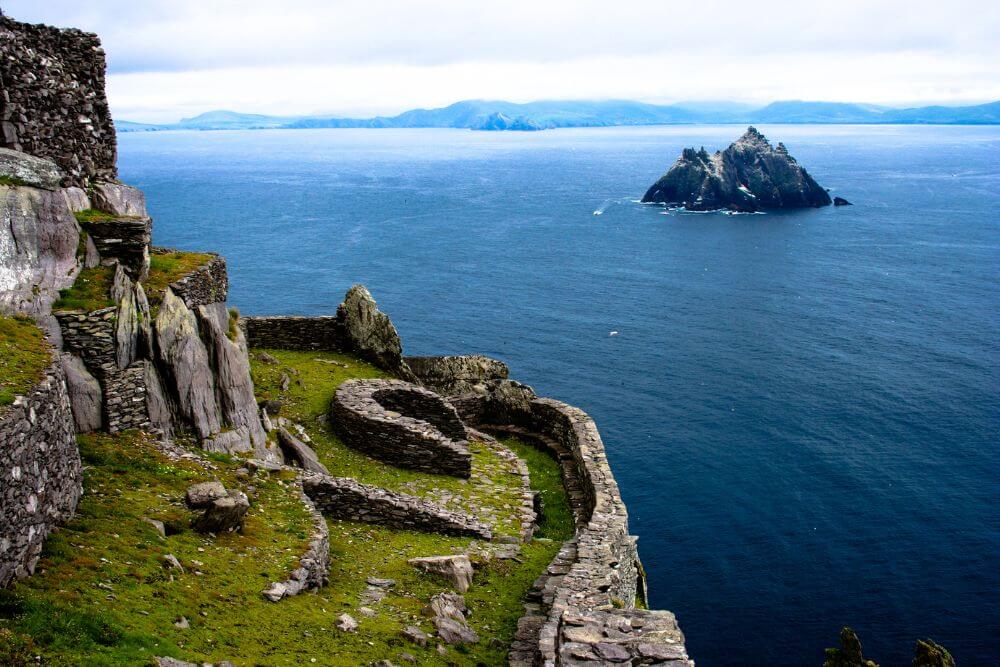
These unique islands off the County Kerry coast are famed for their large seabird colonies. One of the largest Gannet colonies in the world is found here, along with many other birds such as Razorbills , Black Guillemots , Fulmars , Manx Shearwaters , Cormorants , Arctic Terns and many more.
The best way to see these colonies is by boat. Several different tour companies offer boat tours around Skellig Michael and the Little Skellig. (Note this is a different tour to the one that lands on Skellig Michael and is popular with Star Wars Fans.)
Please note that access to the Little Skellig Nature Reserve is only with written permission from BirdWatch Ireland .
Cape Clear Island
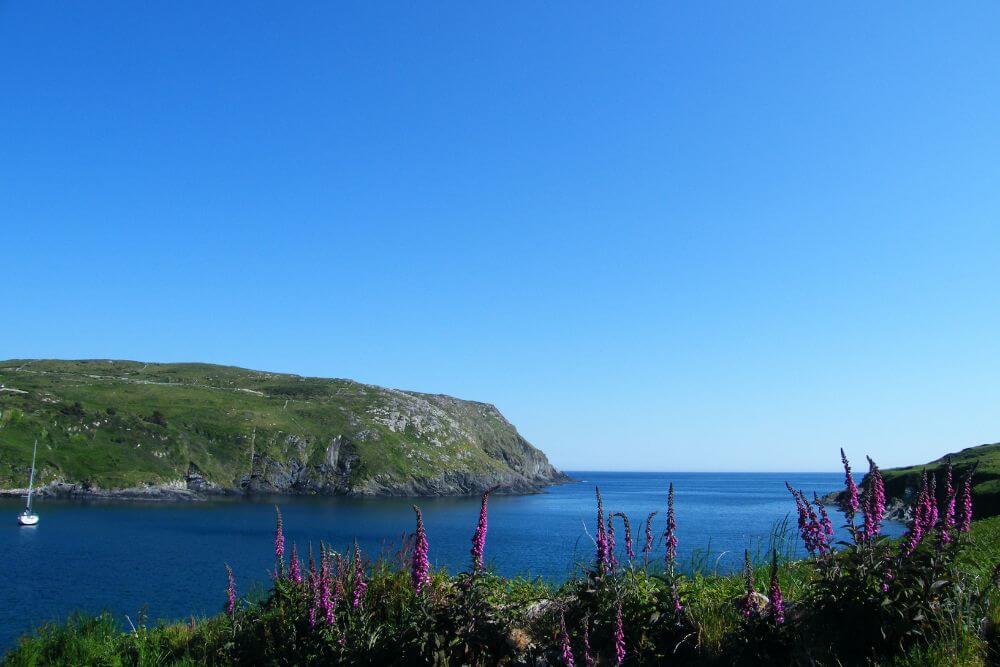
Cape Clear Island is one of the most interesting places in Ireland to bird watch. This small island off the coast of County Cork is a mecca for seabirds and unusual migratory birds. The potential of the island for birdwatching was spotted early on and there has been a bird observatory on the island since 1959 .
The location of the island on one of the most southerly areas of the country means that for many birds, it is the first landfall they encounter. Many birdwatching sites are found around the island, including by the Lighthouse and Pointabullig (Pointe na Boilge). From here, you can seawatch (or see the migratory birds flying in from the sea) during late summer. If you can time it right, you might just see the breathtaking spectacle of thousands of Manx Shearwaters flying over from their winter feeding areas in the Southern Atlantic for example.
Not only do birders head to Cape Clear, there are many other great opportunities to see more of Ireland’s wildlife, including whales , dolphins , Basking Sharks and sometimes even Leatherback Turtles off the coast.
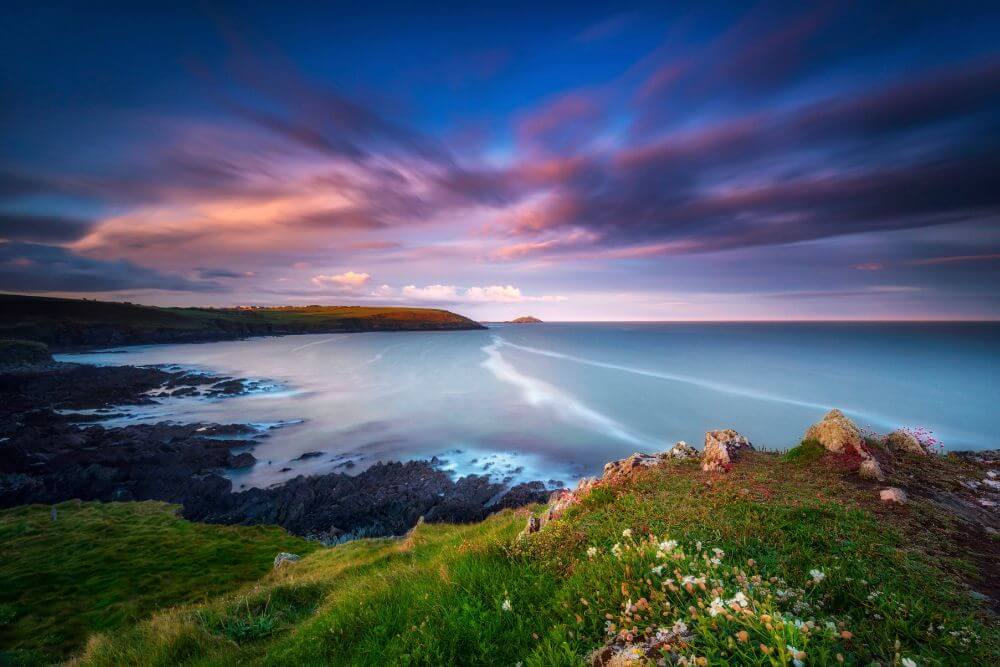
Some other famous bird watching spots around Cork include Ballycotton in East Cork and Cuskinny Marsh Nature Reserve located near Cobh (just one of the places where you will find Kingfishers in Ireland).
Midlands Ireland Birdwatching
One of the most important areas of the Midlands for birdwatching is the Shannon Callows . This flat area has not been intensively farmed unlike other areas of Ireland due seasonal flooding that takes place here in winter.
This is particularly good news for the Corncrake among many other species, as it is one of the few places in Ireland where this seasonal visitor is found. Whinchats and Sedge Warblers are just a few of the other species that can be found here in the summer.
Winter is when you might get a chance to see Black-Taliled Godwits , and other migrant swans, ducks and geese.
Bird Watching Northern Ireland
Oxford island nature reserve, county antrim.
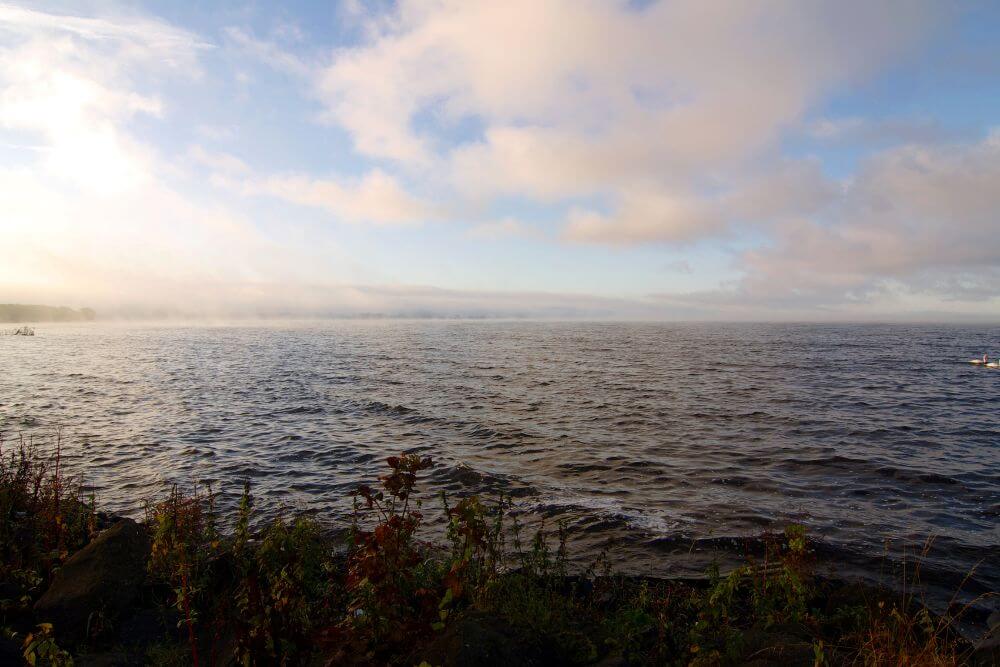
The Oxford Island Nature Reserve on the shores of Lough Neagh is a great spot to watch the bird species, particularly ducks, on the lake. This reserve is not in fact an island as the name suggests, but rather a peninsula that juts into the lake. (There are also several bird watching hides, as well as walking trails around the reserve.)
Lough Neagh is the largest lake in Ireland and Britain . Bird watching is also possible in the surrounding areas, including the smaller lakes (Lough Guillon and Lough Beg) and wetlands.
Rathlin Island, County Antrim
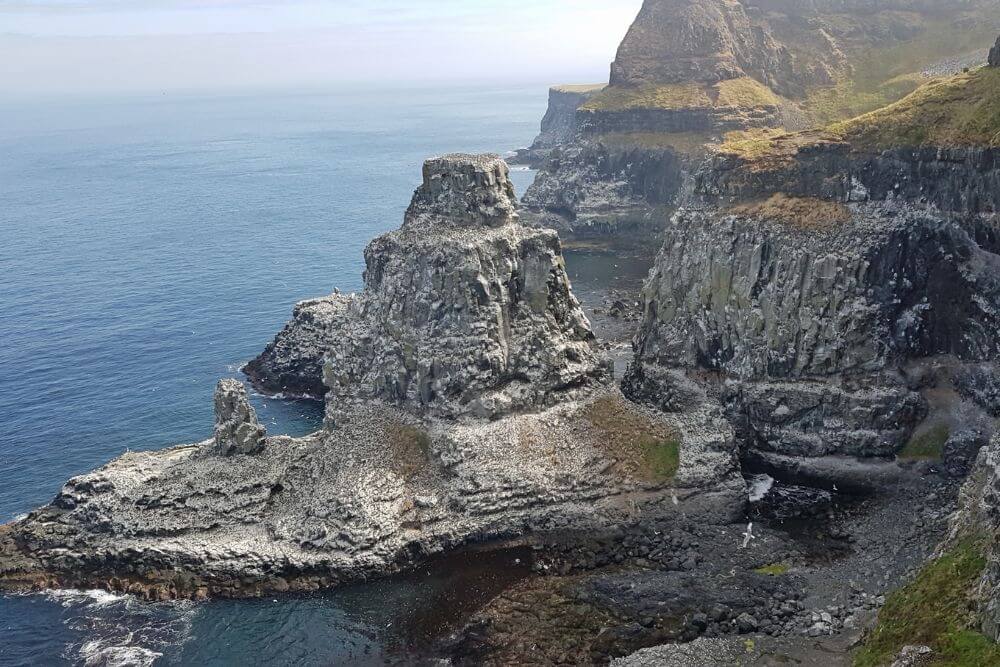
The largest seabird colony in Northern Ireland is on Rathlin Island. Rathlin West Light Seabird Centre , run by RSPB, offers unparalleled views of the colony. The viewing platform, which is located lower on the cliff than the centre, allows you to see seabirds such as Kittiwakes , Gannets and Puffins (May-July) jostling for the best nesting site and later on, the young chicks.
Added bonus: You will also be able to see the famous “ upside-down lighthouse ” here.
Bird Watching in Ireland FAQ
Where can i learn more about birds in ireland.
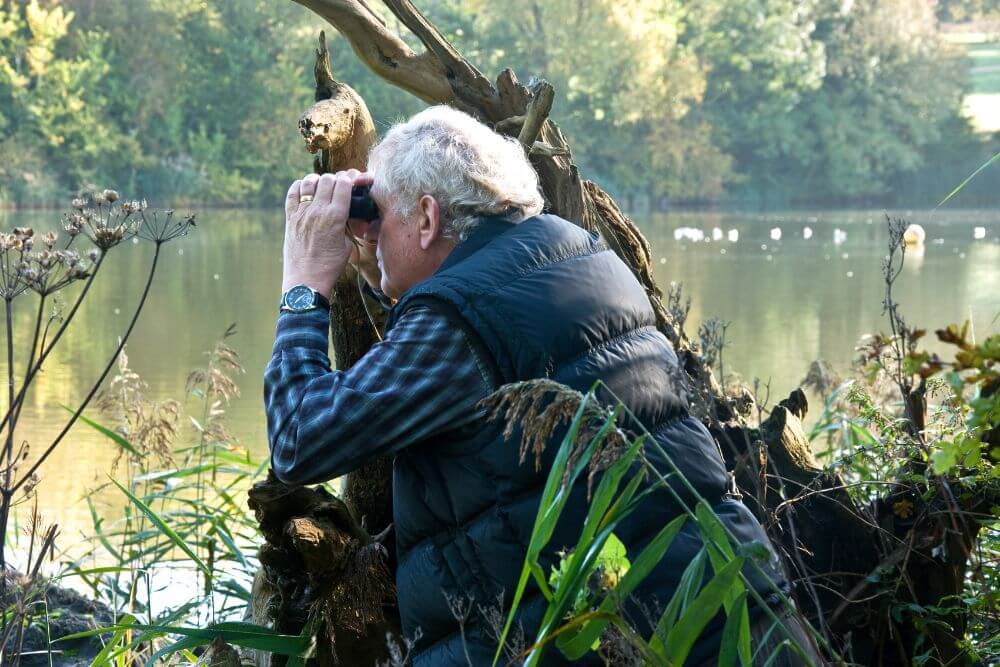
Bird Watch Ireland is a charity that provides great resources on all things avain in Ireland. They are also responsible for maintaining some of the nature reserves, such as the East Coast Nature Reserve and they run the Bird Watching Observatory on Cape Clear. For more information about Bird Watch Ireland, as well as courses and events, please check their website. It is also possible to take part in a variety of bird watching courses and events .
Eric Demspey , aka “the Birdman” is one of the leading experts in Irish birds and wildlife . He has published several best selling books on birds and bird identification and offers guided tours and other tailored events. Through his in-depth knowledge and insight, he offers a unique birding experience especially if you are looking for bird watching holidays Ireland has to offer.
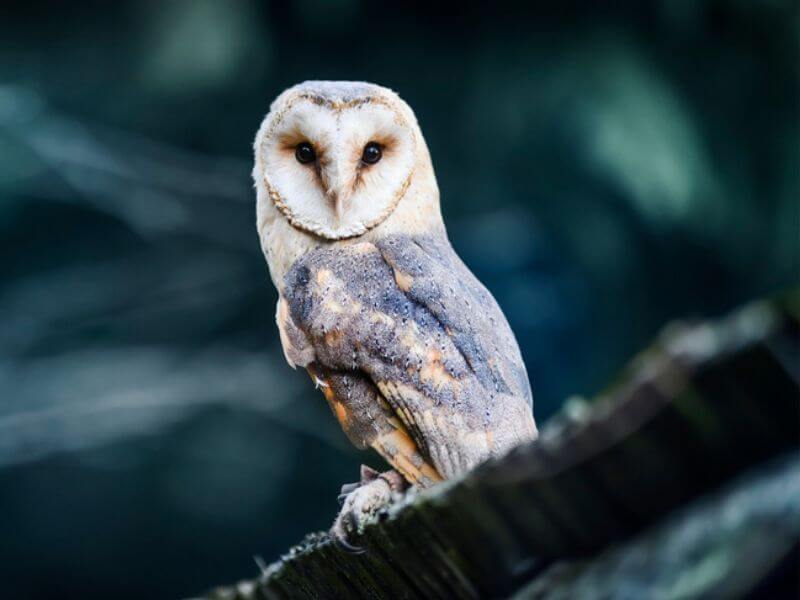
Irish Birds
Interested in reading more about Irish birds? Then start with the garden birds of Ireland or the impressive birds of prey in Ireland in the wild, where you will learn about the eagles in Ireland and other birds of prey like the Kestrel or Ireland’s owl species .

(Irish Nature Expert and Celtic Enthusiast from Ireland)
Emer Walker , founder of LetsGoIreland.com , is a Cork native with profound expertise in Irish nature and ecology. Holding a PhD in Restoration Ecology and backed by extensive research in ecological sciences, she’s delved deep into Ireland’s natural wonders, from its rugged landscapes to its serene beaches. Emer’s passion also encompasses Celtic art and traditions. As a true authority on Ireland’s natural and cultural heritage, she invites readers through LetsGoIreland.com to immerse themselves in the authentic Irish experience.
503-714-3504
Learn about upcoming trips!
Success! Now check your email to confirm your subscription.

Blarney Castle

Great Spotted Woodpecker

Cliffs of Moher

Great Crested Grebe

Birds, Nature, and Culture
Interested in this tour?
With its ancient castles, rugged landscapes, breathtaking coastlines, and some of the most enchanting scenery in the world, Ireland is a country that warms the heart and feeds the soul. Join Wild latitudes on this 11-day adventure that will take you around the entire island, giving you the very best of this wonderful country has to offer…
We’ll welcome you at the Dublin Airport, then head straight out for a bit of birding enroute to our first lodging. Oystercatcher, Arctic Tern and Black Guillemot are a few species we’ll likely encounter today. Next it’s off to Wexford, birding Wicklow Mountains National Park on the way in hopes of seeing White-throated Dipper, Great Spotted Woodpecker, Red Kite and Red Grouse. But we are in Ireland, and this is more than just a birding tour, so we’ll be sure to allow time to enjoy the old-world charm of our hotel and the village it’s nestled in.
Next, we’re off to County Cork, birding Tacumshin and Lady’s Island Lakes on the way. These famous lakes can yield various species of shorebird such as Black-tailed Godwit, Lapwing and Common Redshank plus Marsh Harrier, Reed Warbler and the chance of a rare migrant. Tonight, we’re in at another classic Irish lodging in the quaint village of Blarney, positioning us perfectly to visit the Castle the next day. Jay, Coal Tit, and Sparrowhawk are some of the species we’re likely to see after kissing the Blarney Stone. We then bird our way through the stunning Killarney National Park, looking for White-tailed Eagle and Red Deer after which we reach the quintessential Irish village of Dingle, where we’ll stay two nights to give us time to enjoy it’s charm. From here, we take a boat to the Blasket Islands, home to vast colonies of seabirds like Razorbills, Manx Shearwater and the charming Atlantic Puffin.
After leaving Dingle, we visit the famous Cliffs of Moher for its scenery, bustling seabird colonies and Red-billed Chough, tour the flora-rich limestone landscapes of The Burren and stay a night in Galway. From there we head into Northern Ireland to spend our last two nights of the tour in Belfast, at the magnificent Merchant Hotel. We visit the Giant’s Causeway area in the morning, returning to Belfast to give everyone time to enjoy this vibrant city.
Along the way, we’ll visit the odd brewery, sip our share of Guinness, hear traditional Irish music fill the streets, and experience the true essence of Ireland.
Tour Highlights
bird the island’s top birding hotspots with steve robertson from wild latitudes and one of the island’s top birders leading the way., experience the rich culture of ireland… feel the charm of the irish pubs, hear the sound of traditional music filling the air, visit the remains of castles, old villages and ancient ruins like newgrange burial chamber., circumnavigate the entire island of ireland, visiting many of its key cities and villages, including dublin, wexford, blarney, dingle, galway & belfast., visit world-famous irish sites like glendalough, blarney castle, killarney national park, the cliffs of moher, the burren and the giant’s causeway., stay in a range of wonderful irish lodgings, everything from an old, irish castle, to a quaint irish pub/hotel, to belfast’s only 5-star luxury hotel., see & experience more of ireland in 11 days than one might ever think possible., itinerary at a glance.
Arrive in Dublin, welcomed by Steve Robertson and Irish co-leader Niall. A bit of casual birding enroute to our first accommodation. Time-permitting, we’ll stop at Rogerstown Estuary for a bit of shore-birding before we head south of Dublin to Fitzpatrick Castle, located near the coast.
In the morning, we’ll bird the forests of Wicklow Mountains National Park in hopes of spotting Coal Tit, Goldcrest, Great Spotted Woodpecker, and other European species, and in the afternoon, we’ll bird the marshes of Kilcoole, where Ringed Plover, Oystercatcher a colony of Little Terns await us.
Today will be spent birding the famous Tacumshin Lake searching for shorebirds like Black-tailed Godwit, Curlew, Dunlin and other wetland species like the Reed Warbler, Bearded Reedling,Great Crested Grebe, and maybe even a Water Rail. We plan to visit the city of Cork enroute to our next lodging, which is a wonderful little classic Irish Pub.
Today we’ll tour the Blarney Castle in the morning and bird the grounds where woodland species like the Jay and Spotted Flycatcher are to be found, and many more. Then it’s off to the Killarney area, birding our way to The Kerry Way Pub, another Irish charmer to be sure!
Today we explore the Killarney National Park, keeping an eye out for such rarities as the White-tailed Eagle and the Red-breasted Merganser. Native Red Deer can also be seen here. After getting our fill of the park, we head to the charming coastal town of Dingle in the afternoon. This little village is the quintessential Irish village, with lots of great little pubs that fill the evening with the sound of traditional music.
Boat cruise to Blasket Islands to view the seabirds such as the Black Guillemot, Chough, Kittywake and Puffin. Grey Seal colonies are also on the island, and conditions permitting, we’ll go ashore to explore the island’s historic buildings first-hand. On the return boat ride we’ll be focusing on seeing cetaceans such as the Humpback Whale, Rissos Dolphin and Minke Whale. We’ll visit a local distillery before returning to the hotel in Dingle.
Today we visit the world famous Cliffs of Moher, a highlight of any tour to Ireland. Here, many seabirds thrive, and Razorbills can be seen in great numbers. After the cliffs, we head to our next lodging allowing time to bird the grounds and enjoy its lovely setting and charming atmosphere.
Today we explore Burren National Park in the morning, where ancient landscape of “pavement limestone” and one of the best examples of Karst geology in the world. We’ll enjoy all this park has to offer… its birds, butterflies, flora, and rugged geology, before heading off to Galway, a vibrant city with a life and feel all its own.
Today is largely a travel day, though we’ll fill it with interesting stops along the way. We’ll drive from Galway and the Republic of Ireland, into the country of Northern Ireland and on to the city of Belfast, arriving with time enough for everyone to enjoy the evening exploring this unique city.
Today we visit the unforgettable Giant’s Causeway, a gigantic stone edifice that is actually 100% natural. After spending time at the Causeway, we’ll visit the “carrick-a-rede,” a famous rope bridge to the island of Carrickarede… Traversing the bridge is optional of course, but the stunning scenery will be impossible to miss. We return to Belfast to have dinner together at a near-by restaurant, enjoying the comradery of our group for the last night together in Ireland.
We’ll visit the Newgrange burial tomb enroute to the Dublin Airport. This amazing structure is over 5,000 years old, and predates the Pyramids of Egypt. After our visit, we’ll head to the Dublin airport. The plan is to enjoy lunch together before saying our farewells and catching our flights home.*
*NOTE: This tour ends in Dublin by design: If you wish to enjoy a few days in the enchanting city, you are more than welcome to extend your stay. Taxi’s, Uber, Lyft and/or a hotel shuttle can easily transport you to any location within the city.

This tour is full.
Contact us to get on the wait list.
FEE for TOUR: $4,875
DEPOSIT: $2,500
START DATE: May 8, 2024
DURATION: 11 days
GROUP SIZE: Up to 12
TRIP FOCUS: Birds and Culture
WHAT'S INCLUDED
- Double-occupancy lodging
- Ground and water transportation
- Breakfasts and lunches
- Excursions and park fees
- Guiding services
Get the brochure for this tour
The PDF brochure includes:
- A detailed itinerary
- Registration Info
YOUR GUIDES
A true lover of the natural world, Steve Robertson has been a student of nature his entire life. First, as a little boy, who caught every creature he could for the mini zoo he kept in the garage, then later as an adult, leading scientific research expeditions into some of the most remote regions of the world, searching for rare species in such places as Tasmania, Madagascar and the upper Amazon Basin. With degrees in Wildlife Biology, advanced biology & education, Steve has worked in the field of Environmental Education for over 30 years. From 1998 to 2017, he served as the Education Director for the Audubon Society of Portland, creating a number of innovative programs including International Ecotours, a program that has won hundreds of accolades from around the country. During his time with Audubon, Steve personally designed and led Ecotours to over 20 countries, spanning six continents.

Bob Sallinger currently serves as the Urban Conservation Director at Willamette Riverkeeper, and previously served at Audubon Society of Portland where he worked for over thirty years on wildlife conservation issues of the Pacific NW. While at Audubon, he also managed Oregon's busiest wildlife hospital where he directly oversaw the treatment of more than 45,000 wild animals. Here, Bob led many successful efforts to protect imperiled species and wildlife habitats, for which he won numerous Awards and local & national accolades. He loves all things wild, is passionate about grassroots conservation, and is excited to work with Wild Latitudes to share his knowledge of, and enthusiasm for, the natural world.

If you love nature travel, you’re in good hands with us
How we travel.
We gauge the success of a tour on how well it was enjoyed by all. Providing a rich, rewarding experience for each individual is our top priority. Our tours generally have an easy pace so that everyone gets to experience all a region has to offer. We create a friendly, non-competitive atmosphere that encourages tour participants to help each other in the field. Just as safety and comfort are cornerstones of our tours, so are humor and the simple joy of learning. The good cheer and camaraderie on our tours often inspire post-trip get-togethers and new, life-long friendships.
We’re crazy about birds, but they are only part of the story. Our tours offer a holistic experience by taking the time to appreciate all of the animals we encounter– including mammals, reptiles, amphibians, fish, and insects. They all interact and play vital roles in their ecosystems. We also take time on our tours to explore the plants and geology of the regions we visit. Fostering a deeper understanding of new cultures is one of our goals. On your tour, you’ll taste exotic cuisine and hear local music. You’ll have time to peruse the market, stroll through villages, and share stories with the people you meet.
Protecting the Wild
Ecotourism is a powerful tool for protecting the wild regions of the world. For example, parts of Uganda are now devoted to the conservation of the Mountain Gorilla. Though still endangered, ecotourism has pulled this species back from the precipice of extinction. We aim to make a positive conservation impact wherever we travel. We often use local guides and stay in small, locally-owned lodges. On every trip, we donate to a local conservation organization that works to protect a native species or ecosystem. When you travel with Wild Latitudes you are helping to protect wild places and the amazing species that call them home.
Get more info by email and access to special deals
What our tour participants are saying

Oaxaca Tour 2021 [Trip Report]
![bird tours ireland Cape May Tour 2021 [Trip Report]](https://wildlatitudes.com/wp-content/uploads/Photo-by-Greers_1-900x506.jpg)
Cape May Tour 2021 [Trip Report]
![bird tours ireland Nature Journal: Malheur Refuge in Oregon [Video]](https://wildlatitudes.com/wp-content/uploads/SE-OR_Thumbnail_1-900x506.jpg)
Nature Journal: Malheur Refuge in Oregon [Video]
- Upcoming Tours
- Trip Reports
- Terms and Conditions
- Privacy Policy
The latest from our blog
Get in touch with us.
503-714-3504 [email protected] Wild Latitudes, LLC PO Box 25115 Portland, OR 97298
Privacy Overview

Are you sure you want to sure you want to leave the feed?
Oops... something went wrong!
Looking for inspiration? Planning a trip? Or just want to scroll yourself happy? We'll show you an Ireland that's tailor-made for you.
- #Landscapes
- #CultureandHeritage
- #OutdoorActivities

Oops, no internet connection
While offline, you can still add items to ‘My Board’. New travel reccomendations will only show up once you’re back online.
See what Ireland has in store for you
Items without a physical location are not shown in map view.
Looks like your board is empty
Look out for the little heart icon around Ireland.com, simply tap the icon to start adding items to your board!

Board settings
Collection cover image.
Visible to people you share your board with
Share Board
Share a link to your ‘My Ireland’ board and inspire friends, co-travellers and family. Only you can add or remove items from your board.

Forgot your password?
Create an account.
Access My Ireland across all of your devices by logging in.
Sign up Not got an account?
Terms of use | Privacy policy
Login Got an account?
Location access
- View offers and deals nearby you
- Get travel inspiration based on your location
- Local weather warnings and useful travel information
Enable location access
Location access on ios.
- 1 Open the website settings for this website in your browser
- 2 Select Location settings
- 3 Choose “Allow
- 1 Open the My Ireland website

- 2 Select the Icon below

- 3 Select “Website Settings

- 4 Change “Location” to “Allow”

Notifications
Travel times.
Tell us when you are going to be travelling Ireland, and we will show you tailored recommendations for the duration of your trip.

- Tips for events happening during your stay
- Helpful travel reminders and updates
You have unsaved changes. Save before leaving?
We take your privacy very serious and only ever process your data with your persmission. If possible this is handled anonymously and we will never store your data for longer than is required. For more information on how we handle your personal data please read our Privacy Policy.
Remove Data
To securely remove all data associated with your profile please contact our Data Protection Officer.
Reset your Board
This will remove all the items you have previously liked from your board. Please note, you can’t undo this action.
Are you sure you want to reset your board?
This will completely reset your board and all associated data permanently. This cannot be undone.
- Created date 19 July 2023
Delete account
Sorry you’re leaving. But you gotta do what you gotta do. Just a reminder, if you delete your account, you won’t be able to post in Community. And it’s permanent so you can’t “undo” it in the future.

Ireland’s bird-watching hotspots
Get up close to Ireland’s birdlife on islands, lakes and in national parks.
Ireland’s bird-watching hotspots
Whether you’re a casual bird watcher or a keen observer, you’ll find much to enjoy when it comes to birdlife on the island of Ireland
- #NatureandWildlife
- #SustainableIreland

Ireland in your inbox
Sign up to receive free email newsletters from Tourism Ireland, including vacation ideas, insider tips, news, and events.
We will use your email address to send you personalised content straight to your inbox based on how you interact with this website and our advertisements on other websites.
Something went wrong...
Success! Thank you for subscribing to our Newsletter!
I understand that by signing up, I will receive personalised email content based on my use of Tourism Ireland’s website, emails and Tourism Ireland’s advertising on other websites, cookies and tracking pixels. You can unsubscribe at any time by clicking 'unsubscribe' in our emails. Find out more information on "How we handle your personal data" in our privacy policy .
I would like to receive information and special offers by email from carefully selected travel partners. For more information please see our privacy policy .

Bull Island, Dublin
Sitting in the broad expanse of Dublin Bay , Bull Island (also known as North Bull Island) has a lot going for it. For starters, it’s a biosphere reserve and a Special Area of Conservation. But the titles don’t stop there. This sandy island, which is connected to the mainland by a wooden road bridge, is also a National Nature Reserve and a National Bird Sanctuary, so, needless to say, it’s a pretty good spot to go birdwatching.
Go exploring around the mudflats and dunes here and you’ll feel like you’re a million miles away from city life, as you spot species such as the Brent goose, northern pintail, the European golden plover, short-eared owl and the magnificent peregrine falcon. The island is car-free so the best way to enjoy it is by bike from Dublin city centre – a journey of about 10km.

Saltee Islands, County Wexford ©shutterstock
Lying just 5km off the coast of County Wexford and surrounded by crystal clear waters, the Saltees are two unoccupied islands that have become a haven for an impressive array of birds including gannets, puffins and Manx shearwaters. The islands are a popular stopping off point for birds migrating in autumn and spring, and the Great Saltee (the larger island) can be visited as part of a day trip from the fishing village of Kilmore Quay.
As well as being a magnificent bird sanctuary, Great Saltee boasts a fascinating history. Neolithic farmers, Early Christian hermits, Vikings, Normans and medieval monks all called the islands home at one point. In the period from 1500 to 1800, the Saltees were used as a base for pirates and smugglers.

Rathlin Island, County Antrim
Take the ferry across the Sea of Moyle off the coast of County Antrim and you might just spot a dolphin on your way to Rathlin Island . If you don’t get lucky, don’t worry – as you’ll encounter an abundance of nature when you get here including one of the most flourishing seabird populations on the island of Ireland. In fact, Rathlin is such an integral part of bird conservation that the Royal Society for the Protection of Birds has its own seabird centre on the cliffs.
From this stunning vantage point, you’ll glimpse rare and beautiful birds swooping and squawking around the rugged coastline, including guillemots, razorbills and even puffins. And once you’ve enjoyed the birdlife… stick around… Rathlin is the perfect escape from it all, with wonderful walking trails, fascinating history and compelling tales of shipwrecks.

Glenveagh National Park, County Donegal
With its wilderness of hauntingly beautiful mountains, shimmering lakes and Baronial-style castle, Glenveagh is effortlessly romantic and endlessly mesmerising. Remote, rugged and boasting a variety of habitats from woodland to peatland, the park attracts a wide range of bird species from migrants to residents.
The golden eagle was reintroduced to Ireland in 2001 and the first birds were released right here in Glenveagh. While the park cannot claim any eagles to be resident at present, they frequently forage in the valley here. Keep your eye out, too for the peregrine falcon, merlin, sparrowhawk and kestrel, and, if you’re visiting in May, you might be lucky enough to hear the distinctive singing of the male wood warbler – a sound that’s been likened to the spinning of a coin. There are lots of walking trails available, from the 3.5km lakeside walk to the 7km Lough Insagh Walk, making it a great place to relax, restore and enjoy the flora and fauna of this magnificent place.

Strangford Lough, County Down
The largest lough in the UK and Ireland, Strangford has beauty in abundance. Connected by a narrow channel to the Irish Sea, the lough is almost fully enclosed by the Ards Peninsula and is a wonderful mix of unique towns, ancient history and wonderful wildlife.
The mild conditions in winter make it the preferred destination for more than 70,000 seabirds who migrate here from northerly latitudes, including a high proportion of Brent geese from Arctic Canada. Spring is another great time to spot breeding birds, including nesting herons, tree sparrows and yellowhammers. And if you like your marine life as much as your bird life, you’re in luck – both common and grey seals can be spotted in the lough all year round.
Where do you want to go?
Do you feel like tasting wild Atlantic sea spray on your lips? Strolling through vibrant city streets? Exploring ancient ruins? Right this way…
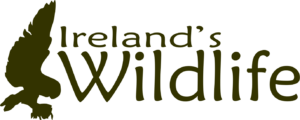

Guided Wildlife & Birdwatching Walks
€ 25.00
Join me on the West Cork coast for a half-day guided wildlife and bird watching adventure exploring a range of coastal habitats around Rosscarbery.
- €25 per adult, €10 per child (10-16, accompanied by an adult under 10s free) — pay using cash or card at the end of your walk
- Walks scheduled on demand subject to availability year-round
- Starts and ends at the Celtic Ross Hotel, Rosscarbery
- Discover the diversity of species along this stretch of Ireland’s Wild Atlantic Way
- Pick up hints and tips to help you see more wildlife wherever you go
- Includes a shore-based whale-watch if conditions are suitable, looking for whales and dolphins that frequent this stretch of coast.
NB. We need a minimum of 4 paying participants for walks to go ahead. Please fill in the form below to reserve your place on a scheduled walk or to request a walk on another date.
NB. We schedule walks year-round based on demand and guide availability -- we need a minimum of four participants booked on a walk for it to proceed.
Out of stock
- Description
- Reviews (0)
Experience the fabulous wildlife of the West Cork coast

As well as soaking up the spectacular scenery and ocean views these experiences are all about connecting with and enjoying the beauty of the natural world around you.
About Discover Wildlife Walks

We’ll explore the coastline of Ireland’s Wild Atlantic Way, looking for wildlife every step of the way. From wading birds and wildfowl on estuarine mud flats and pools, to mammal tracks and signs, to searching for orchids amid the sand dunes and scanning the Atlantic for the whales, dolphins, basking sharks and seals that call this spectacular stretch of coastline home.
You never know quite what you might see on one of these exciting and varied walks.
Small Group Size
We limit the number of people on each walk to ensure everyone gets the most out of the experience. Keeping group sizes small means everyone gets an equal chance to see the wildlife we encounter.
NB. If you have a larger group we can accommodate you on request — we can also provide additional guides for larger groups where necessary. Please get in touch to discuss what you need.
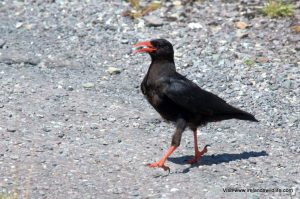
What to bring
- Sturdy footwear and appropriate clothing for the conditions– including waterproofs
- Personal snacks and drinks
- Binoculars if you have them (a limited number of loan binoculars are available free of charge and your guide will have a high-quality spotting scope to offer close-up views of more distant wildlife)

Ireland’s Wildlife was born of Calvin’s enthusiasm and passion for wildlife, and a commitment to make it more accessible and engaging to a wider Irish audience. These Discover Wildlife Walking Safaris, along with our longer Discover Wildlife Weekends are a natural extension of that passion, commitment and enthusiasm to share the wonders of the natural world with others.
Calvin has lived in the Rosscarbery area since 2002 and has fifteen years of experience watching the wildlife of West Cork and helping others to enjoy it.
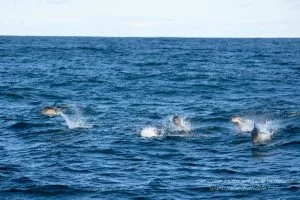
Wildlife… all year round!
Discover Wildlife Walks take place on Wednesdays and Saturdays year-round depending on guide availability and are scheduled on demand, so please please send in your booking and we’ll do our best to accommodate you.
… and in most weathers
As with any outdoor activity in Ireland, we have to pay attention to the Irish weather and tailor our route and plans accordingly. We typically schedule walks during appropriate weather windows, and rarely have to cancel or reschedule a walk. Generally, we try to go ahead despite the weather, as there is always wildlife to see.
We advise clients to dress appropriately, and more often than not walks proceed as scheduled.
“Calvin was an expert guide, great company and his local knowledge came in very handy. Thanks again for a great time and great looks at many birds. Not to mention the gorgeous Irish countryside and coast. I will definitely call again should I be lucky enough to get another business trip to the Emerald Isle.” Rob Wilson, New Jersey, USA.
Please contact us if you have any questions about the Discover Wildlife Walking Safaris.
Some West Cork wildlife highlights

Wildlife is unpredictable, and of course, we can’t offer any guarantees in relation to what you’ll see on your walk. Not knowing is all part of the fun. However, here’s a sample of a few highlights we’ve seen on our Discover Wildlife Walks:
- Visiting waders and wildfowl
- Resident kingfishers and occasionally otters
- Seals , dolphins and sometimes whales (minke, fin and humpback whales) from cliff-top vantage points
- Butterflies and day-flying moths (summer)
- Choughs and Ravens soaring above the sea cliffs
- Basking sharks (summer)
- Large numbers of shearwaters passing just offshore (summer/autumn)
- Diving gannets just offshore
- Migrant birds (spring and autumn — anything could turn up)
- Resident birds of prey including kestrel , sparrowhawk , buzzard, peregrine falcon and occasionally merlin and hen harrier
- Tracks and signs left by elusive resident mammals and the occasional glimpse of the animals themselves.
- … and much more besides
Looking for a more immersive Wildlife Experience? Check out our Discover Wildlife Weekends .
Custom wildlife watching / bird watching tours available.
You can book an Ireland’s Wildlife guide for your unique wildlife, birding and wildlife photography adventure. We can cater for groups of any size, or guide on a one-to-one basis. Bespoke guiding fees start from €250 per day, and we can tailor the itinerary and location to suits your needs.
Find out more about our wildlife and bird guide service .
There are no reviews yet.
Your email address will not be published. Required fields are marked *
Name *
Email *
Your review *
This site uses Akismet to reduce spam. Learn how your comment data is processed .
You may also like…
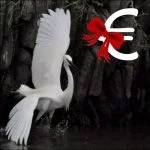
Discover Wildlife Experience: Cash Equivalent Voucher

Custom Wildlife Tour Voucher
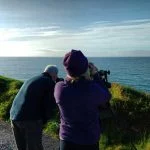
Your own private wildlife and birding guide
Related products.
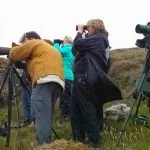
Discover Wildlife Weekends
Where are the best birdwatching locations in Ireland?
According to birdwatch ireland, 450 different species of bird have been recorded on ireland's shores..
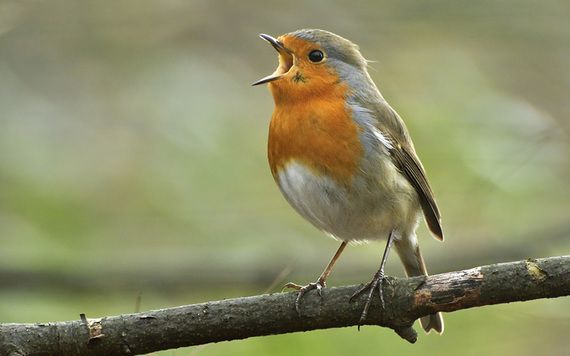
Ireland is home to more than 400 species of birds, making it a prime location for birdwatching enthusiasts. Here are some of IrishCentral's favorite locations for birdwatching in Ireland.
According to BirdWatch Ireland , 450 different species of bird have been recorded on Ireland's shores. The island's rugged coastlines mean we have some of the best seabird views in Europe.
So, it’s time to get those binoculars out and witness the beauty on our doorstep.
Here are five of the top locations to watch birds in Ireland:
North Bull Island – Dublin
This is one of the best places to bird watch because of its triple habitat areas.
North Bull Island has an intertidal mudflat, sand dunes, and a large saltmarsh that encourages interesting species to feed, nest, and overwinter.
It was the first National Bird Sanctuary of Ireland designated in 1931 and it’s important as both a Special Protection Area and a Special Area of Conservation under the EU today.
You’ll spot shoveler, shelduck, pintail, and teal geese on the causeway, and plenty of wader birds on the saltmarsh where short-eared owls roost. The sand dunes attract peregrine falcons and merlin to hunt, and the mudflats are loved by grey plover, dunlins, sandpipers, and even the American golden plover.
There are so many birds to see on this 5 km long and 800 m wide island you’ll need a whole day and then some to see just a fraction. Good news then that there are plenty of facilities and it's connected to the mainland by Bull Bridge.
- Rare tropical seabird dies four days after landing on Irish beach
East Coast Nature Reserve, County Wicklow
East Coast Nature Reserve is a fairly new reserve that opened in 2009. It’s Ireland’s largest reserve at 89 hectares and forms part of the Murrough Wetlands - a Special Protection Area and Special Area of Conservation. Visitors can use two observation hides and specially constructed boardwalks seven days a week to bird watch.
The protections afforded to this reserve means there's a flourishing insect and flower life, which in turn attracts lots of birds.
Woodland glades attract finches, swallows, and swifts, and the wet grasslands are home to wigeon, whooper swans, hen harriers, and little egrets. More recently, short-eared owls, great spotted woodpeckers, and kingfishers have been spotted.
It’s taken no time at all for birds to discover this natural environment and take full advantage of it. If you love it too, volunteer to help out. It’s being restored by the charity BirdWatch Ireland.
Inishbofin Island, County Galway
Many of us remember the call of the corncrake, but we haven’t heard the kerrx-kerrx call of the male for years. That’s because it's suffering a major population decline, mostly due to intensive farming which harvests at the same time as our corn crakes nest.
Corncrakes are threatened with extinction but you can see them in very small numbers in North Donegal, West Mayo, Connaught and the popular tourist resort Inishbofin Island .
The first corn crake call of the year is usually heard here in April, but you’ll need to listen carefully and keep your eyes peeled because they are secretive!
Inishbofin is still home to the corncrake because it was free from farm machinery until the 1980s. A hand scythe gave the birds plenty of time to make an escape.
This island is also home to breeding seabirds and you’re likely to spot storm petrel, arctic tern, kittiwakes, herring gulls and choughs too.
Little Skellig, County Kerry
Off the coast of Co. Kerry the iconic Little Skellig is a BirdWatch Ireland nature reserve and seabird breeding colony.
It’s a great place to spot puffins, and who doesn’t love the brightly billed flightless tunneling birds that rely on our sea’s sand eel population.
As well as puffins you’ll spot 30,000 pairs of northern gannets, storm petrels, Manx shearwaters, razorbills, and other visitors from the crashing Atlantic.
You can’t land on Skellig Island but boat companies offer round trips. Remember your sea legs and waterproof binoculars for a close-up view of this iconic birdwatching paradise.

Are you planning a vacation in Ireland? Looking for advice or want to share some great memories? Join our Irish travel Facebook group.
Your garden
If heading out on a boat makes you feel queasy, one of the other best places to spot birds is in your back garden .
Pop the kettle on and sit back to admire collared doves, wrens, robins, black caps, siskins, finches, tits, sparrows, starlings, and magpie visitors.
If you don’t have many birds right now there are simple steps you can take to encourage them and boost their dwindling numbers.
Birds love protective shelter from predators. If you don’t have a hedge or anything leafy you can plant a tree. A small crab apple works just as well as a large oak. Evergreens such as pyracantha and ivy are attractive to shy birds too.
Put out water. A birdbath on the lawn and one raised up on a pedestal are essentials for birds because they drink and bathe to keep their feathers waterproof.
Put out food. Give nuts and seeds to finches, tits, siskins, wrens, and Blackbirds and thrushes love them too and also appreciate fruit. Fat balls, without wire mesh that traps bird legs, are life-savers in the cold months.
- The Irish pigeon that played a vital role in World War II's D-Day landings
Switch to pesticide-free gardening. Just like our nature reserves, keeping your garden insecticide free encourages insects, butterflies and food sources for birds.
Build a home. Pop up a birdhouse in a sheltered shady spot and you might be lucky enough to spot fledglings in the spring. If you love technology, try a nest-cam for a Big Brother close up view.
Bird watching is one of life’s simpler pleasures. In the internet rush of gaming, live streaming and Facebooking the original Twitter is a chance for us to breathe in nature at its finest.
Bird watching is a simple joy and unspoiled Ireland is one of the most under-rated places to search them out.
Pull on your walking boots and grab your binoculars or settle down for an afternoon by the window. It’s all out there waiting for you.
*Originally published in January 2021. Updated in September 2023.
Sign up to IrishCentral's newsletter to stay up-to-date with everything Irish!
This article was submitted to the IrishCentral contributors network by a member of the global Irish community. To become an IrishCentral contributor click here .
Related: Animals

Ireland's most unique raffle, WIN a new McHale Fusion 4 Plus Baler or €75,000 cash

GIVEAWAY: It's back! Tell us what makes Ireland special and win a trip to the Emerald Isle

The intersection of Saint Patrick and paganism in Ireland

Reasons to love Ireland in spring: Bucket list travel destinations and fun-filled festivals
What's your Irish County? County Antrim
Beyond the putting green – what to do in the lovely town of Portrush
Dublin attraction rated best in the world by Americans
After living in Ireland for almost one year, this is what I’ve learned
Homemade Irish soda farls recipe
Faces of the Titanic: John Horgan, lost at sea, remains a mystery man
Ireland's 20 "true" hidden gems revealed - from castles to parks to natural wonders!
WATCH: "The Thing" removed from Dublin after years of controversy

County Wexford – Waders Galore!
Latest tweets.
Oriole Birding Follow
Oriole Birding is a UK based birdwatching tour company specialising in small group holidays throughout the UK and to over 30 countries worldwide
There were some superb male Snow Buntings at Cairngorm car park this morning, one of the highlights of the day for our Speyside group along with Golden Eagles, Mountain Hare, Slav Grebes and Ring Ouzel More on the blog: https://www.oriolebirding.com/category/birding-diary/
Join our Newsletter

Don’t miss our latest offers, news and availability! To subscribe to our newsletter, simply follow the link below and you will automatically receive our next issue by email, as well as any news on fact finding tours not listed in our main programme. Past newsletters can be viewed by clicking here .
ATOL Protected

All the flights and flight-inclusive holidays on this website are financially protected by the ATOL scheme. When you pay you will be supplied with an ATOL Certificate. Please ask for it and check to ensure that everything you booked [flights, hotels and other services] is listed on it.
Please see our booking conditions for further information or for more information about financial protection and the ATOL Certificate click here .

- Email Us [email protected]
- Tel: +44(0)1479 821248
- Request a Brochure
- Website Search Search
Southern Ireland in Autumn
Migration based birding along the south coast, from county cork and county wexford.
- Tour Info Pack
- Trip Information
Trip Reports
This is an exciting migration-based holiday, taking in hotspots and some lesser-watched places along Ireland's south coast. We spend our days enjoying the large numbers of waders which migrate through the region, with seabirds and passerines featuring in favourable conditions too. Busy birding days await, as we divide our time between County Cork in the south-west and County Wexford in the south-east.
Beginning in Cork, where daily birding will largely be dependent on the weather, tides and recent sightings. Likely birding locations include Mizen Head, Rosscarbery, Clonakilty, Galley Head and Lissagriffin Lake, though we try to keep our itinerary as flexible as possible. A day trip over to Cape Clear Island will be a highlight - one of the most famous sites in Ireland, dedicated to bird recording since the opening of the observatory in 1959. Also the most southerly point of Ireland, it is a magnet for birds and we spend several hours exploring on foot, enjoying Chough around the cliffs and migrants in the sparse cover. On another day, we take a seabird and whale watching boat trip, hoping to see rarer seabirds such as Great and Cory’s Shearwater alongside whales and dolphins.
County Wexford is famous for both huge numbers and the impressive variety of waders and wildfowl recorded in the region every year. Our visit has been timed to coincide with peak passage, giving chances of Little Ringed and Grey Plover, Ruff, Little Stint, Curlew, Green and Wood Sandpiper among the masses of Black-tailed Godwit, Golden Plover and other commoner waders. With hopes of finding a Nearctic vagrant among their number, during two full days we cover famous sites including Tacumshin Marsh and Our Lady’s Island Lake. Other birds we may see include Marsh and Hen Harrier, Mediterranean Gull, with chances of Roseate Tern plus seabirds and passerines in favourable conditions. While mainly trying to find our own birds we seek out any rarities within reach, all the while enjoying a great week’s birding on the south coast of the ‘Emerald Isle ’.
Enjoy your complimentary pre-flight overnight hotel before your holiday begins. Full details from our office! Read more about our Pre-flight Service here !
Day 1: Sat 31 August 2024 Arrival and travel to Rosscarbery After relaxing in our complimentary VIP Airport Lounge, we fly to Cork, expecting to arrive at around lunchtime. Getting straight into birding, we have a few hours before checking into our accommodation, perhaps looking for waders at Clonakilty or migrant passerines at Galley Head. Overnight in the Rosscarbery area for four nights.
Day 2: Sun 1 September - Cape Clear Island We take the foot ferry from Baltimore to Cape Clear Island, enjoying great island scenery as we travel. The most southerly point of Ireland, Cape Clear is a fantastic place, and also one of the most famous birding locations in the Country! As we walk around, Chough and Raven may be seen around the cliff tops, with family groups of Stonechat, Wheatear and Whitethroat in the sparse cover. The lack of trees aids searching for migrants, and many rarities from Siberia and North America have been found here - Cape Clear is very much the 'Fair Isle of Ireland'! In the last decade Northern Waterthrush, Yellow Warbler and Solitary Sandpiper have been recorded during the early-autumn period, and there is good sea-watching potential here too. On our visit in 2019, among a fall of Pied Flycatchers and other drift migrants, we were lucky enough to discover a beautiful juvenile Woodchat Shrike! Our schedule allows enough time to check most of the areas of cover in and around the village – who knows what we may unearth?!
Day 3: Mon 2 September - Seabird and Whale watching boat trip Seabirds are an exciting aspect of birding in Southern Ireland, and we take a boat trip out into the Atlantic hoping to connect. These waters can be great for cetaceans too, and travelling up to 5 miles offshore we target both birds, whales and dolphins. Every trip out to sea is different, though commoner species will include Gannet, Manx Shearwater, Storm Petrel, Fulmar, Shag, Kittiwake and auks including Puffin. A few Black Guillemot may also be seen around the harbours, while Sooty and Balearic Shearwater, Great and Arctic Skua may be seen at sea too. And with increasing sea temperatures, a number of ‘southern’ species are becoming far more regular in the Southwestern Approaches. Possibilities include Great and Sooty Shearwater or perhaps something rarer like a Wilson's Storm Petrel… Cetaceans are another major target of our boat trip with Common Dolphin, Harbour Porpoise and Minke Whale the three most likely species. Getting out to deeper water our chances of ‘ larger’ whales increases, with Fin and Humpback Whale plus Risso’s and Bottlenose Dolphin are all more frequently recorded.
For the rest of the day, we explore locations close to our accommodation. The estuary at Rosscarbery is one such option, often busy with waders such as Oystercatcher, Ringed Plover, Dunlin, Knot, Sanderling, Redshank, Black and Bar-tailed Godwit, Curlew, Whimbrel and Turnstone. The site has a strong track record for Nearctic rarities, and roosting Mediterranean Gull and Sandwich Tern are both likely too. A series of other tidal sites and freshwater pools are also available nearby, with Kingfisher, Little Egret, Snipe and Water Rail perhaps featuring.
Day 4: Tue 3 September – Lissagriffin and Mizen Head Mizen Head has a fantastic range of birding habitats to cover and is well worth a visit during the migration period. On the way, Lissagriffin Lake is often the first stopping point for both ourselves and any storm driven Nearctic waders and wildfowl! Species such as Greenshank, Green and Wood Sandpiper appear regularly, with Pectoral Sandpiper and Lesser Yellowlegs just two of the rare waders recorded in past autumns. Cover is limited out on the head itself, so smaller birds can be easier to find around the scrub and gardens. That said, there are still lots of different patches to explore and following easterly winds and rain, southbound warblers, chats, flycatchers and more may be found with a bit of effort. Peregrine and Merlin may be seen, and Chough can seem very common here, gathering in large post-breeding flocks where there is plenty of food.
Day 5: Wed 4 September - Transfer to Wexford A transfer day to County Wexford but not without some birding, our route likely dictated by any recent bird news. Passing a number of key sites on the journey, such as Timoleague, Old Head of Kinsale, Cobh Harbour, Ballycotton and Youghal, each hold their own birding opportunities. Our targets mainly being migrants we keep our plans as flexible as possible, and given we will be driving through County Waterford a visit to hotspots such as Brownstown Head or Tramore Back Strand won’t be ruled out! Overnight in Wexford for three nights.
Day 6: Thur 5 September - Tacumshin Marsh Tacumshin Marsh is one of the most legendary birding sites in Ireland, and indeed the entire British Isles! The vast wetland habitats make it hugely attractive to passing waders, and almost every species of shorebird ever recorded in the UK has been seen here! With so many different areas to explore, we hope to see a full assemblage including Ruff, Curlew Sandpiper, Little Stint and perhaps a rarity or two. Regular ‘yanks ’ include Pectoral and Buff-breasted Sandpiper and American Golden Plover, while Long-billed Dowitcher, Baird’s and White-rumped Sandpiper are becoming almost annual at this hotspot! Tacumshin is a large reserve which needs to be covered by foot, and wellington boots are essential to explore properly and often reach the best birds. As well as waders, in the reedbeds Bearded Tit, Reed Bunting and Water Rail may be seen, while likely raptors include Hen and Marsh Harrier, Merlin and Peregrine as we explore through the day.
Day 7: Fri 6 September - Birding County Wexford County Wexford boasts a number of great birding sites to choose from, and we use the weather, tides and recent sightings to guide us. Most locations are in close proximity to our hotel, including Our Lady’s Island Lake, Rosslare Strand, North Slob, The Cull, Kilmore Quay and Carnsore Point. Our targets may include seabirds, wildfowl, waders, gulls, terns and a range of passerines. Aiming to find new species for our trip list, checking through the roosting tern flocks may yield Roseate, Little or Black Tern. New waders might include Little Ringed and Grey Plover, while species such as Spoonbill, Great Egret and Glossy Ibis are increasingly recorded. In favourable easterly winds, good habitats await migrant passerines, and in onshore southerlies we can take on the sea-watching challenge again. As we explore, it is worth keeping an eye out for two curious Irish endemics – Irish Coal Tit in any patches of woodland and Irish (Mountain) Hare in the meadows.
Day 8: Sat 7 September - Return to Cork and Departure Today we transfer back to Cork airport, perhaps with a few hours birding before our short flight back to London.
Please note: all itineraries are given as a guide only. Actual holiday content may vary according to the judgement of your guide, and elements beyond our control (eg weather).
What's included in your holiday price:
- scheduled return flights between London and Cork, airport taxes.
- ground transportation as outlined including all transportation in Ireland in a modern air-conditioned vehicle. All tolls.
- accommodation and all meals, including breakfast, lunch and dinner.
- the services of your leaders.
- ferry tickets to Cape Clear island and the Seabird and Whale watching boat trip
- The Heatherlea Pre-Flight Service offers everything you need at the airport, including hotels, car parking, airport lounges, regional flights, and upgrades. Let Heatherlea take the strain! Pre-flight airport hotel and lounge included subject to terms and conditions. Read more..
What's not included in your holiday price:
- personal insurance, drinks and other personal expenses, and any other costs not specified as 'included'.
More holiday information:
Accommodation : Four nights comfortable en-suite hotel accommodation in County Cork, and three nights comfortable en-suite hotel accommodation in County Wexford. Food and drink: A full cooked breakfast will be offered every morning and we will have packed lunches from our hotels for the field. When an opportunity arises we will make a stop for coffee, though this cannot be guaranteed every day. Transport : Will be a 9 seater minibus driven by your Heatherlea guide, with two minibuses if over 7 guests. Weather and Clothing: The temperature in Southern Ireland is usually between 15-20°C, though warmer or cooler weather are possible at this time of year. Rain and strong winds are possible here at any time and we shall probably have a mixture of weather, as is typical in the British Isles. Exposed headlands and boat trips are often chilly in the wind, please ensure you have full waterproofs, a hat and gloves. Good footwear is also important and (standard height) wellington boots are required as we are likely to need to walk through two or three shallow channels of water at Tacumshin to reach some of the best birding areas. Walking: Moderate, 3-5 miles per day. There will be some days when we will be on our feet for the duration, such as when visiting Cape Clear Island and perhaps at Tacumshin. There will also be some uphill track and road walking so an average level of fitness is required. Biting Insects are unlikely to a problem, though midges and mosquitoes do occur in typically small numbers. Telescope: Your guide(s) will have telescopes for your use, but due to the number of waders, terns and seabirds we thoroughly recommend bringing a scope if you have one to maximise your viewing time. Group size: Maximum 12 with 2 guides; or maximum 7 with 1 guide. Flights are by scheduled airline, from London. We may be able to offer flight arrangements from another location and/or or quote without flights so you can make your own arrangements. If you wish to add an extension either before or after your holiday, please contact us and we will be happy to arrange this for you.
Your Leader
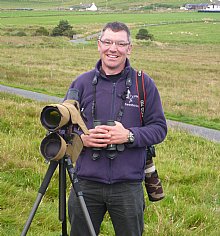
Toby Green: Toby is a very experienced birder, always very popular with our groups and his fellow guides, with a great sense of humour and endless enthusiasm.
Toby joined Heatherlea as a guide in 2013, though he has been birding in Scotland and overseas for over 30 years. He has been Warden on two Scottish reserves, was local WeBS coordinator, has been involved in Hen Harrier and Black Grouse survey work and heavily involved in ringing and satellite tracking of the Loch of the Lowes Ospreys.
Other birding and wildlife holidays in Ireland
- NEW! Wild Northern Ireland
Why choose Heatherlea for your birding and wildlife holiday in Europe?
Our overseas holidays are planned with care to offer great birding and wildlife, led by capable Leaders who really look after you. Every holiday is run the 'Heatherlea Way', and we hope our Overseas Adventures remind you of the quality and care so many of you enjoy in Scotland. That means rewarding and exciting days in the field, and good quality accommodation and meals, with a real flavour of the country we are visiting. Heatherlea always seek to include the personal touches that make all the difference.
Heatherlea holidays are not ‘dawn to dusk’ expeditions. Our less-intensive approach is ideal for those who want to relax whilst experiencing the best wildlife watching, and wherever possible we organise early or late activity on an optional basis. We also take sensible breaks when in very hot places and regular comfort breaks on every holiday whenever possible. All itineraries are planned carefully around the best wildlife opportunities, and you won’t miss out on memorable wildlife, whilst enjoying relaxed, informal days that are great fun.
The really important part of any wildlife holiday is the experience for you, our valued customer. Heatherlea invest in many things to offer you the best possible service;
- We have been organising birding and wildlife holidays for over 30 seasons, and have a highly experienced and capable office team. We also offer a telephone and email service outside normal office hours.
- Heatherlea overseas holidays have a maximum of 12 clients per trip, putting the emphasis on personal service, and helping you get the best possible experience.
- Our holidays often include things which others might invite you to pay yourself, for instance Departure Taxes and tips to hotels.
- All elements of our holidays are sold under our own licence, ATOL 6113. Under ‘Flight-Plus’ legislation it is a legal requirement of any tour operator to hold an ATOL licence for the supply of any overseas holiday where a flight is involved, if that holiday includes either overseas accommodation and/or car hire. It can be a criminal offence for an operator to book flights as part of a package without an ATOL licence. Heatherlea also hold full Tour Operator Insurance for your added protection.
- Heatherlea is your complete wildlife holiday provider. Our ‘Back Office’ team can organise all your pre-flight and other travel needs. Our specialists will help you book the right services, at the best price. Book holiday extensions through us, and your ATOL protection is extended further. We don’t charge extra for this service.
- Heatherlea is a limited company, registered in Scotland, and registered to pay VAT (applies to all holidays within the European Union).
Southern Ireland for Birders 2019
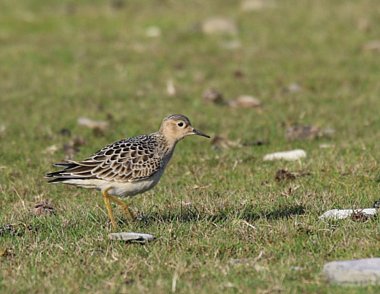
- Mainland Scotland
- Scottish Islands
- England & Wales
- Spain: Lynx - January
- Sweden in Winter for Birders
- Iceland Birds, Orca and Borealis
- NEW! CANARIES – Tenerife, Gomera and Fuerteventura
- Camargue - March
- Italy - Po Delta and Venice - April
- Portugal in Spring
- Lesvos, Greece - April
- Extremadura, Spain - April
- Croatia - April
- Spain - Catalonia
- Skyros, Greece - April
- Mallorca - April
- Poland - May
- Armenia - May
- Finland - May
- NEW! Bulgaria and Northern Greece
- Estonia - May
- BBC Wildlife Spitsbergen 2019
- Hungary - in spring
- NEW! Austria
- Svalbard 2020
- Iceland - July
- Azores - August/September
- Ireland for Birders - August
- Spain: Picos de Europa Mountains - September
- Andalucia and Morocco in Autumn - September
- Bulgaria in Autumn - September
- Hungary in Autumn - October
- NEW! Estonia in Autumn
- Birdwatching
- NEW! Finland and northern Norway
- South Moravia Short Break
- NEW! Italy - Po Delta & Rome
- NEW! SPAIN – for BIRDS and BUTTERFLIES
- Southern Europe in spring
- NEW! Estonia Short Break in Early Spring
- NEW! Bulgaria and Northern Greece in Winter
- NEW! Cyprus
- Finland Wolverines and Bears
- Hungary - Winter short break
- NEW! Finland - Bears & Wolverines
- NEW! Romania and the Danube Delta
- Sweden in Autumn – Migration at Falsterbo
- NEW! Slovakia
- Iceland - birding, volcanoes and glaciers
- NEW! Georgia
- New! Madeira
- NEW! Finland and northern Norway in winter
- from Aberdeen to the Arctic
- Picos Mountains and Meseta Plains
- Extremadura in winter
- NEW! Spain in Early Spring
- NEW! Whales and Wildlife in Northern Norway
- Asia & Australasia
- Arctic and Antarctica
- Holiday Planner
- 'for Birders' Tours
Sign up to be kept up-to-date on our latest news and special offers
About Heatherlea Holidays
- Tour Calendar
Contact Information
The Mountview Hotel , Nethybridge , PH25 3EB Scotland
T: +44(0)1479 821248
E: [email protected]
- Heatherlea - Birdwatching Holidays is a 5 star wildlife experience as graded by the Scottish Tourist Board. 5 star STB
- Heatherlea - Birdwatching Holidays is a 3 star hotel as graded by the Scottish Tourist Board. 3 star STB hotel
- Heatherlea - Birdwatching Holidays is an ATOL protected holiday provider
- Heatherlea - Birdwatching Holidays on Facebook
- Heatherlea - Birdwatching Holidays on Twitter
- Heatherlea - Birdwatching Holidays on Instagram
- Heatherlea - Birdwatching Holidays on Youtube
- © Heatherlea - Birdwatching Holidays
- Privacy Policy
- Terms & Conditions
- Website Cookies
- Reg. in Scotland No 214912
- Site by Plexus

Custom and Set-Departure Bird & Wildlife Tours Around the World
Scotland and ireland - birding tour, tour overview:.
Scotland is an ancient land filled with thick Caledonian pine forests, towering mountains, deep black lochs, great whiskey, and castles straight out of Braveheart. This tour takes us to all of these and more with a route that includes the scenic western Isle of Skye and the beautiful Hebridean islands of North and South Uist, as we make our way across this historic country in search of its best birds. The British Isles aren’t famed for their abundance of birds, but Scotland is often wrongly swept up in that assumption. In fact, Scotland has its very own set of specialties that draw the Brits north of the border almost constantly, but has until now remained a secret to many foreign birders. We’ll search the Caledonian Pine forests and picturesque lochs around Grantown-on-Spey for Western Capercaillie, Crested Tit, Scottish and Parrot Crossbills, and Black Grouse, before climbing the Cairngorms to find Rock Ptarmigan, Snow Bunting, Mountain Hare, and maybe too Eurasian Dotterel. We then head out to the scenic islands of Skye and the Uists, off the west coast of Scotland, to find White-tailed and Golden Eagles, Northern Harrier, Short-eared Owl, breeding shorebirds, and Parasitic Jaeger, Eurasian Otter, the stunning Red-necked Phalarope, and fields of rasping Corncrakes. If luck is on our side, we may even find one of the Snowy Owls that occasionally breed on these outlying islands. On our way to the coast we’ll search a remote valley for Golden Eagle and hundreds of Red Deer, and a small loch for superb breeding Horned Grebes. An evening spent just inches from a family of Pine Martens will also surely be a highlight.

Upcoming Departures:
Main Tour: 7 - 13 June (TBA)
Extension: 13 - 17 June (TBA)
Ready to Book?
Detailed itinerary, other tour details:.
Length: 7 Days (11 Days w/ Ext.)
Starting City: Edinburgh
Ending City: Glasgow
Pace: Relaxed
Physical Difficulty: Moderate
Focus: Birding, History, Culture
Group size: 8 + 1 leader

Day 1: Edinburgh to Grantown-on-Spey (Scotland)
After a morning meet in Edinburgh, we’ll our way through rolling lowlands and up into the Cairngorm Mountains that form the
very heart of the scenically spectacular Scottish Highlands. We will stop several times on the way to our historic but very comfortable castle-hotel in Grantown-on-Spey, seeing plentiful Willow Ptarmigan (Red Grouse), breeding shorebirds, and
(with luck) perhaps even Rock Ptarmigan or Golden Eagle on the way. This evening we will scour local Caledonian pine forests
for the elusive Western Capercaillie, the enigmatic Crested Tit, and undeniably cute Red Squirrel. The night will be spent in Grantown-on-Spey.
Day 2: The Cairngorms
The whole of today will be spent in the core of the Highlands. This morning we plan to search again for Capercaillie and also for ‘bubbling’ Black Grouse, all the time keeping an eye and an ear out for flocks of Crossbills that may contain Common, Parrot and Scottish Crossbills within their midsts. After admiring gorgeous breeding-plumaged Horned Grebes and Common Goldeneye on a glassy, tranquil loch, and a spot of lunch, we will ascend the Cairngorms to look for snow-line breeders such as Snow Bunting, Rock Ptarmigan, Mountain Hare, and, if lucky, Eurasian Dotterel too, which can be remarkably confiding at times. A final night will be spent within the same, beautiful castle come hotel, in Grantown-on-Spey.
Day 3: Grantown-on-Spey to The Hebrides
Though today involves a fair amount of travel, it is through some of the most scenic parts of Scotland, with several great stops to include both photos of the pretty panoramas available, and birds besides. We will visit a small, scenic loch for Horned Grebe if we missed them previously, search for Golden Eagle, enjoy hundreds of Red Deer in a hidden valley, and skirt the shores of Loch Ness. Along the way we’ll stop for photos of recognisable and fairy tale-esque loch castles before making our way onto the fabled Isle of Skye, stopping for White-tailed Eagles and our first try for Eurasian Otter along the way. We’ll spend this afternoon exploring Skye, having our first look at breeding Parasitic Jaegers and a plethora of breeding shorebirds, and if there’s time, a wee dram of whiskey at a local distillery, famous for its slightly salty kick. In the evening, we’ll take the short but scenic ferry ride to the island of North Uist, hopefully encountering Manx Shearwater, Parasitic, Pomarine and Long-tailed Jaegers, Great Skua (a.k.a. “Bonxie” in these lands), Gray and Harbour Seals, and a chance of Harbour Porpoise, Common, Risso’s and Bottlenose Dolphins, Orca and Minke Whale. We’ll spend the next two nights on North Uist, and one night on the island of South Uist.
Days 4-5: The Hebrides
The Uists, part of the remote Outer Hebrides island chain, off the west coast of Scotland, are a paradise unlike any other in the UK, offering arguably the finest landscapes in all of the British Isles. We’ll spend two full days on the islands, exploring the unique machair habitat that is dotted with wonderful crofters cottages, flanked by idyllic beaches, and steeped in Celtic history. As well as plenty of birding, we’ll take time to look at some of the rich history of the islands, including Neolithic stone circles and standing stones, Iron Age roundhouses, and the burial site of mummies as old as Tutankhamun. We’ll make our way slowly around the islands, stopping for breeding loons, jaegers and shorebirds, fly-over Golden and White-tailed Eagles and low-flying Short-eared Owls and spectral Northern Harriers. Our first morning will be spent at the quaint RSPB reserve of Balranald where Corncrakes rasp from deep cover in typical fashion, but atypically here, also often show extraordinarily well. This site can also be superb for jaeger passage at this time of year, with favourable onshore winds. We’ll also search small pools and lochs for gorgeous breeding Red-necked Phalaropes and stunning breeding-plumaged Arctic shorebirds. Aside from the common British birds, including an assortment of tits, finches, thrushes and migrants, this frontier of Scotland continually produces surprises, and we may be lucky enough to see any of a number of scarce migrants and vagrants. The night of day 5 will be on North Uist, and we’ll switch to South Uist for our final night on the Hebrides. In some years, a pair of Snowy Owls breed on these outlying islands. When they do, the island on which they breed is kept a closely-guarded secret, so it will take some focused searching and a fair deal of luck, but we may be lucky enough to see these high-Arctic icons.
Day 6: The Hebrides to Fort William
This morning we’ll take the long ferry to Oban and back to mainland Scotland. The ride is around six hours, but provides some superb scenery and great wildlife watching and serves as a mini pelagic of sorts. We’ll leave the Outer Hebrides early and pass the isle of Coll and the Ardnamurchan Peninsula and finally skirt the inner shore of the Isle of Mull all the way to Oban. The birding can be great and varied, and may include all three jaegers and Great Skua, Manx and Sooty Shearwaters, European Storm Petrel, 3 species of loon, fishing White-tailed Eagles, and Golden Eagles soaring over the mountains of Mull. Marine life is also rich here and we should encounter cetaceans, possibly including Risso’s, Bottlenose and Common Dolphins, Harbour Porpoise, Long-finned Pilot Whale, Orca, and Minke Whale. Even Humpback and Sei Whales are sometimes seen. We could also see the second largest fish on Earth, the colossal Basking Shark, and the strange Sunfish. Arriving in Oban by mid-afternoon we’ll make our way up the coast toward Fort William. We’ll have time to explore the local lochs, streams and forests for birds like “Goosander” (Common Merganser), Wood Warbler, Common Redstart and Pied Flycatcher, and of course see Ben Nevis, the tallest mountain in the British Isles. Our lodgings for tonight also boast a resident population of Pine Marten, which come to the garden each evening and often offer phenomenal views. The night will be spent in Fort William, a Scottish settlement located on the side of scenic Loch Linnhe, within the rolling Caledonian highlands.
Day 7: Fort William to Glasgow for departure (OR to Ireland)
We will have time this morning for a last search of the local area for any additional birds, and a quick stop for a local celebrity – the extremely rare Chequered Skipper butterfly – before making our way gradually south, along the shores of Loch Lomond, to the modern city of Glasgow, in order to connect with departing flights out, or to Ireland for the Emerald Isle Extension.
Emerald Isle Extension
Introduction:
This extension gives the perfect introduction to all things Emerald Isle (as Ireland if often referred to), taking in the key highlights on a whistle-stop tour from the impressive hexagonal geology of the Giant’s Causeway in Northern Ireland, to the truly-emerald Wicklow Mountains, enormous cliffs (and associated seabirds) of Moher, and limestone scenery of the Burren National Park in southern Ireland. We’ll also take in the sights and scenery of the cities, including the birthplace of the Titanic, sites of the Irish struggle in Belfast, the Guinness brewery in Dublin, and a hefty dose of lively live Irish music and the unique Irish pub culture.
Day 1: Scotland to Belfast and Giants Causeway
Beginning straight off the back of the main tour in Scotland, we’ll take a short flight to the city of Belfast (in Northern Ireland). We’ll take time this afternoon to visit the Belfast city sites including Belfast Castle and the Titanic Quarter (where that famed cruise liner was built), and make our way out for our first night of tasting Irish beers and whiskies, live traditional Irish music and tremendous craic. The night will be spent in Belfast.
Day 2: Belfast to Dublin
In the morning we shall take a short drive north to one of the most spectacular geological sites in the British Isles – the magnificent Giant’s Causeway. This ancient formation and UNESCO World Heritage Site consists of approximately 40,000 interlocking basalt columns, more or less hexagonal in shape, and solidified lava 12 metres thick spreading not only along the Irish coast, but even across the Irish Sea to southwest Scotland. This site is popular with visitors from across the globe, and for good reason. Once the hordes arrive, we’ll make a leisurely departure south, heading to the east coast of Ireland and entering the noticeably different Republic of Ireland as we do so. We’ll drive to our base for the next two nights, the famous city of Dublin within the Irish province of Leinster. After settling into our Dublin accommodation, we’ll make our first ‘cultural’ stops at St. Patrick’s Cathedral, Trinity College, and the superb Guinness brewery in the center of historic Dublin. We’ll take a tour of the premises and enjoy an ice-cold pint of the honey-consistency brew on the rooftop as we soak in views of Ireland’s most famous city. Once we’re relaxed and refreshed, we’ll take our bins in hand once more, and visit a local venue to try and track down some of the local pallid Roseate and sublime Black Terns, while the mournful cries of Mediterranean Gulls rain down from all around. This evening we’ll indulge in some fantastic pub grub, more live music, Celtic poetry and general good “craic” (a popular Irish term for fun and entertainment)!
Day 3: Wicklow Mountains and Dublin
We’ll make our way out of Dublin today on a birding trip to the beautiful Wicklow Mountains and along the east coast. Here we’ll find fantastic scenery as well as a good list of targets, including Willow Ptarmigan (Red Grouse), Northern (Hen) Harrier, Red Kite, Common Buzzard, Merlin, Gray Partridge, European Golden-Plover, Common Snipe, Common and “European” Herring Gulls, Common Cuckoo, Common Kingfisher, Common Redstart, Eurasian Stonechat, Whinchat, Ring Ouzel, Grasshopper, Sedge, Garden and Wood Warblers, Spotted and Pied Flycatchers, four species of tit, Eurasian Treecreeper, Eurasian Jay, Common Raven and the spectacular Eurasian Bullfinch. If we’re lucky we may see one of the area’s Golden Eagles, though they’re no longer common. Offshore, Harbour Porpoise and Manx Shearwater are sometimes positively abundant, and Minke Whale often seem to be uncommonly common. Humpback Whale is sometimes also often seen in this part of the Irish Sea. Tonight we’ll overnight again in Dublin.
Day 4: Dublin to County Clare
Today we’ll rise early and make our way from the Irish Sea to the Atlantic Ocean, crossing from the Irish east coast to the calm, quiet, and quaint town of Lisdoonvarna in western Ireland’s County Clare. We’ll take the opportunity to explore the striking karst limestone scenery of the Burren National Park. We’ll need to be lucky to find a day-roosting Long-eared Owl, but we’ll be sure to find Northern Wheatears running amongst a spectacular and diverse flora, while Common Redpoll and Yellowhammer sing from every available song post. The mammal population of Burren is surprisingly rich; we could encounter Red Squirrel, Irish Hare and Irish Stoat, while we’ll need good luck to find the ordinarily crepuscular European Badger and Hedgehog. We’ll finish the day at the truly spectacular Cliffs of Moher, where thousands of alcids (auks), including the comical clown-like Atlantic Puffin, Black-legged Kittiwakes, European Shags and Great Cormorants breed. Peregrines will likely patrol the cliffs, along with Eurasian Kestrel, Red-billed Chough and Northern Fulmar. We’ll make our way back to Lisdoonvarna this evening for our final night on the Emerald Isle. This is Ireland as the Irish know it, an authentic and genuine gem in the epicentre of Irish culture, where even the traditional language holds on. After dark, Long-eared Owls can often be seen and heard on the outskirts of the town, famed for its authentic Irish music and local festivals.
Day 5: Galway and departure from Shannon
We’ll have time for a survey of the Galway coast this morning before taking flights from Shannon Airport. Galway is known as one of the gull capitals of the UK, and in winter white-winged arctic gulls are positively abundant here. Few linger into the summer, but there is often an Iceland or Glaucous Gull to be found in the harbour, or a handful of stunning breeding-plumaged Little Gulls along the coast. Eurasian Otter is always an unpredictable possibility along Celtic coasts too, while Atlantic Grey and Harbour Seals are sure to be evident, before we depart these Celtic lands once and for all.
Trip Considerations
PACE: Moderate. Early starts are necessary on most days since the sun rises early in summer (around 4:40am) and birding is almost always best early in the morning. Birding in the Highlands is done mostly on foot, while elsewhere it is a mix of birding by foot and from the vehicle. Driving between bases involves several long drives (3 hours each Edinburgh to Grantown-on-Spey, Giant’s Causeway to Dublin and Dublin to Lisdoonvarna, and 3.5 hours Grantown to Uig, Skye), though they are broken with plentiful birding and cultural stops where appropriate. Once at our bases, the driving distances between sites are much shorter. Most breakfasts and at least four lunches are likely to be in the field.
PHYSICAL DIFFICULTY: Easy to moderate. Most of the birding will be on flat or slightly inclined roads or wide tracks and you can expect to walk around 2 miles (3.2 km) per day on average. One afternoon is spent birding higher in the Cairngorm mountains no higher than about 4,100 ft (1250 m). The walk here is over uneven but relatively unchallenging terrain, some of which will be on a well-worn hiking trail; however getting good views of ptarmigans will likely require going off-trail and slowly ascending a wide and gently inclining valley. The rest of the tour is spent at or close to sea level; it is suitable for anybody with a decent level of fitness.
CLIMATE: Scotland sits at a temperate latitude; even in summer, temperatures can be on the cooler side, especially in the morning and at night. Throughout the tour the temperature is likely to sit between 47°-61°F, 8.5°-16°C, however the weather in the British Isles is notoriously fickle and we can expect periods of warm sunshine, cold rain, and maybe even light snow in the Cairngorms.
ACCOMMODATION: Very good to excellent, all have private, en-suite bathrooms, full-time hot water, and 24h electricity.
PHOTOGRAPHY: This is a birding tour, but casual photographers will find worthwhile opportunities to photograph birds and other wildlife. The scenery and cultural aspect of this tour also lends itself to more general photography.
WHEN TO GO: We usually offer this tour in summer to make the most of birds being at the height of their breeding cycle and to see the return of the migrants, with many still singing and several easier to find. Summer also avoids potentially-disruptive snowfall in the mountains. However, Scotland can be fantastic at almost any time of year, and custom tours in spring and winter are also possible, with some tweaks to the itinerary.
Other Information
TRAVEL REQUIREMENTS: A valid passport is required; the passport must be valid for at least six months past your intended stay. Tourist visas are currently not required for citizens of a large number of countries, including the US, Canada, UK, Australia and all EU European countries. Visas are currently required of a number of nationalities, mostly in Asia, Africa, South America and the Middle East. Travel requirements are subject to change; if you are unsure, please check with the nearest embassy or consulate, or ask our office staff for help.
WHAT’S INCLUDED?: Tips to lodge/restaurant staff; accommodation from the night of day 1 to the night day 6, and to the night of day 4 of the extension if taking the extensin; meals from dinner on day 1 to lunch on day 7, and to lunch on day 5 of the extension if taking the extension; reasonable non-alcoholic beverages during meals; safe drinking water only between meals (tap water is potable so you will be expected to fill your bottles where possible); Tropical Birding tour leader with scope and audio gear from the afternoon of day 1 to the afternoon of day 7, and to the afternoon of day 5 of the extension if taking the extension; ground transport for the group to all sites in the itinerary in a suitable vehicle driven by the tour leader; entrance fees to sites mentioned in the itinerary; one way flight Glasgow-Belfast (only if taking the extension); excess baggage charges; a printed and bound checklist to keep track of your sightings (given to you at the start of the tour – only electronic copies can be provided in advance).
WHAT’S NOT INCLUDED?: Optional tips to the tour leader; tips for luggage porters in hotels (where available and if you require their services); flights apart from the one included on the extension; snacks; additional drinks apart from those included; alcoholic beverages; travel insurance; excursions not included in the tour itinerary; extras in hotels such as laundry service, minibar, room service, telephone calls, and personal items; medical fees; other items or services not specifically mentioned as being included.
Tour Reviews
*Participated on this Tour? Leave a Review! We would also love to see your favorite photo, upload it!
Birdwatching in Ireland: 7 beautiful bird species
Ireland is a great bird watching destination. The geographically isolated location of the Emerald Island creates unique habitats for various bird species. Due to the coastal areas, these naturally include many sea and wading birds, migratory birds and year-round residents. For a long time, watching birds was sometimes considered a weird pastime of medieval men in khaki shorts, but the hobby is not only gaining new popularity, but also a certain hip touch . So in this post, we investigate birdwatching in Ireland and introduce seven of the most beautiful bird species in Ireland.

This enchanting bird with its characteristic, semicircular beak is very popular with ornithologists as well as travelers to Ireland.
You can see them from March to September along the west coast of Ireland. For example at the Cliffs of Moher, on the Burren Way , the Aran Islands or Rathlin Island located just off the Antrim Coast .
2. Greenland White-fronted Geese
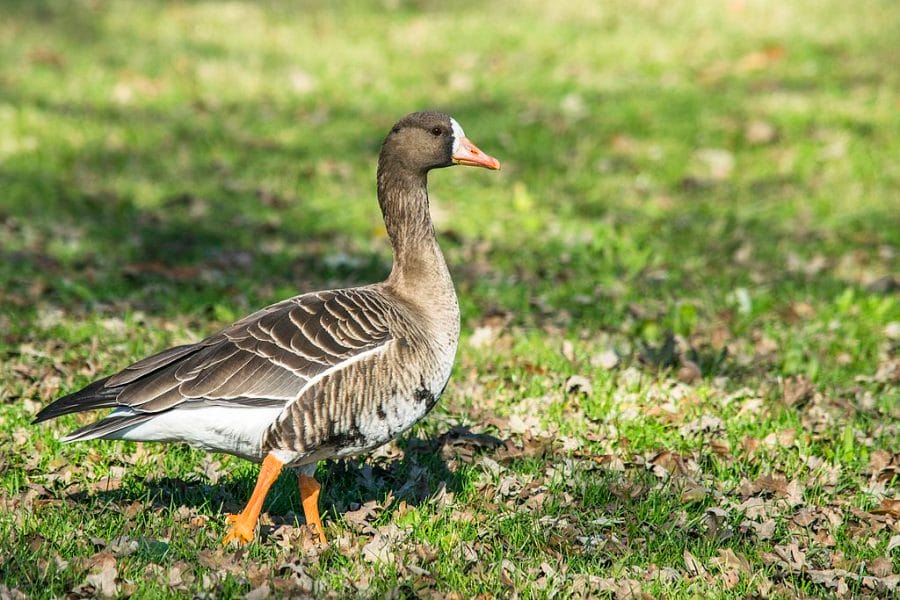
Every October, thousands of Greenland White-fronted Geese arrive on the Irish mainland to hibernate in the Wexford Wildfowl Reserve . White-fronted geese cover 6,000 kilometers a year. In order to survive the long flight, they feed themselves a considerable amount of fat beforehand. Even their organs shrink over time to make room for the body’s own storage facilities.
Almost half of all Greenland White-fronted Geese spend the winter in Wexford.
3. White-tailed Eagles
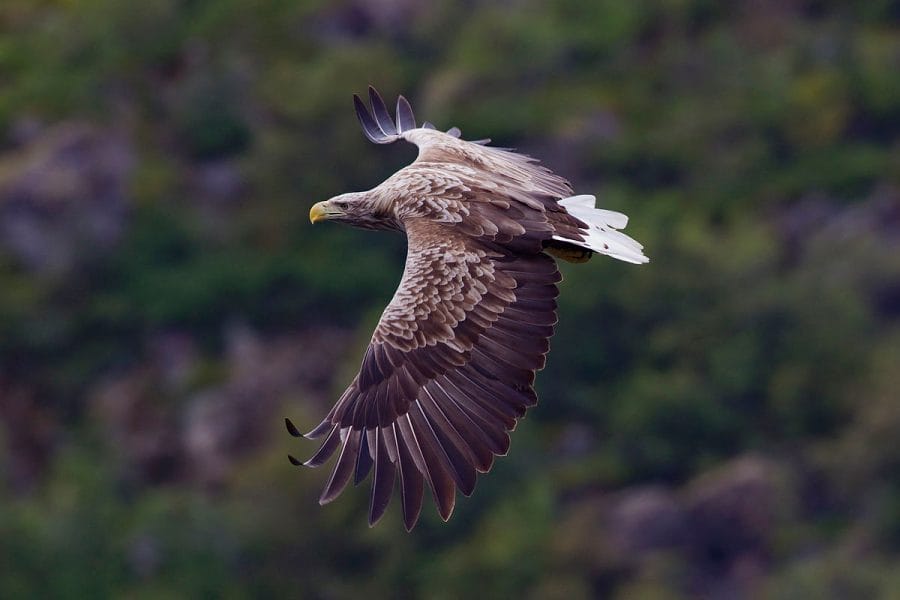
White-tailed eagles died out in Ireland 100 years ago, but an ambitious initiative is trying to reintroduce the majestic bird of prey. Between 2007 and 2011, one hundred young sea eagles from Norway were released in Killarney National Park part of the famous Kerry Way .
Integration in Ireland was an exciting and at times dramatic endeavor . To this day, new white-tailed eagle chicks have hatched under the careful observation of local rangers and ornithologists. You can catch a glimpse of the feathered predators in various places. For example, Glengarrif Harbor on the Beara Way , from the specially built high seat in Mountshannon, or in the Killarney National Park.
4. Razorbill
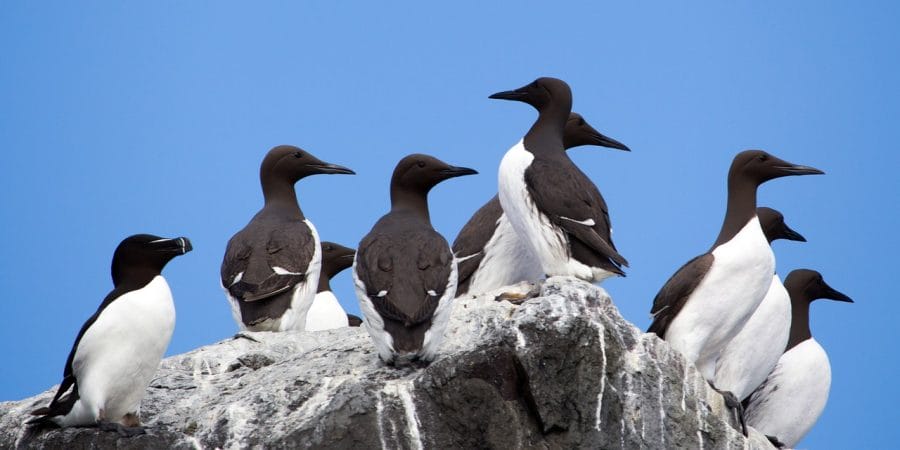
The Giants’ Causeway is also a bird watching paradise. Many shorebirds find places to nest and breed in the cliffs and rock formations. Among them is the razorbill. Characteristic of the razorbill are its black and white plumage and its upright gait. It feeds on small fish that it dives for in the salty Atlantic.
5. Cormorant
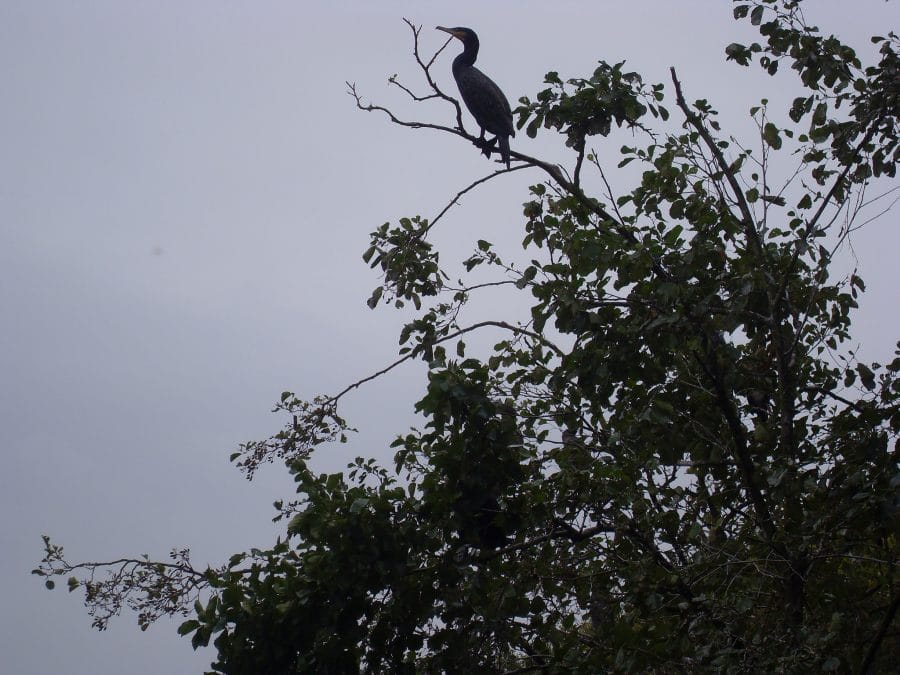
The cormorant is one of the most common types of birds in Ireland. The “water raven” has recovered from the massive decline in the 20th century. In 2010, they were even voted Bird of the Year. It is found near the coast in the south and west of Ireland. For example in Connemara and on the Dingle Way .
6. Ringed Plover
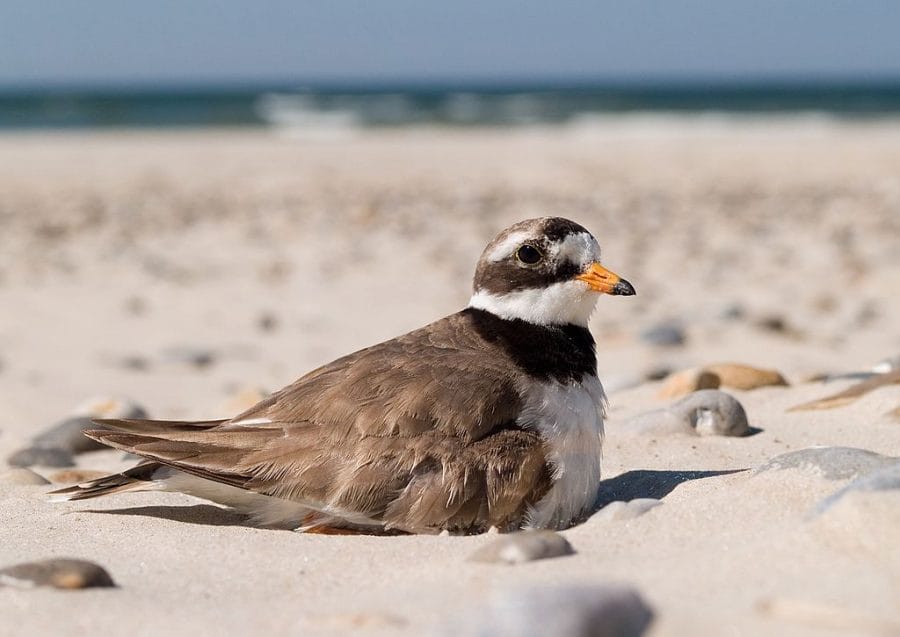
The ringed plover can be recognized by its two-tone beak, black collar and striped head. Ringed plovers are waders that are found in an extensive area from Canada to North Africa. In the west and south of Europe, the cute bird hibernates on coasts without vegetation. In Ireland it can be found near the Burren in Ballyvaughan, County Clare, among other places.
7. Rose Tern

In Ireland, patient ornithologists can see rare birds in front of their binoculars. Corn crake, chough, rose tern are among the birds whose numbers are declining elsewhere. They find valuable habitats in Ireland.
Above all, a colony of rose terns in Wexford and Rockabill Island, near Dublin, enchants the bird conservationists from Birdwatch Ireland and passionate ornithologists alike.
We hope that you enjoyed this guide to Birdwatching in Ireland: 7 beautiful bird species. If you’re interested in getting on in the countryside to do some birdwatching, check out our Ireland walking tours .

Privacy Overview
- All Ireland Tours
- Wicklow Mountains
- Antrim Glens & Causeway Coast
- Connemara & the West of Ireland
- Burren Way & Cliffs of Moher
- Kerry Camino
- St Kevin’s Way & Glendalough
- All Scotland Tours
- West Highland Way
- Rob Roy Way
- Great Glen Way & Loch Ness
- Speyside Way Whisky Trail
- Fife Coastal Path
- All England Tours
- Hadrian’s Wall Path (East to West)
- Hadrian’s Wall Path (West to East)
- Cotswold Way
- South West Coast Path (Cornwall)
- South Downs Way
- Pembrokeshire Coast Path
- Camino Frances (Spain)
- Kerry Camino (Ireland)
- St Kevin’s Way & Glendalough (Ireland)
- Map Of Trails
- Camino Frances
- Book Your Tour With Confidence
- Reasons To Book With Us!
- Resource Centre
- Gift Vouchers
- Meet The Team
- Sustainable Tourism
- Work With Us

- Ascension Island
- Tristan da Cunha
- Burkina Faso
- Central African Republic
- Congo Republic
- Côte d’Ivoire
- Equatorial Guinea
- Eswatini (Swaziland)
- Guinea Bissau
- North Sudan
- São Tomé & Príncipe
- Sierra Leone
- Eastern Cape
- KwaZulu Natal
- Northern Cape
- Northwest Province
- Western Cape
- South Sudan
- Western Sahara
- Afghanistan
- British Indian Ocean Territory
- Heilongjiang
- Inner Mongolia
- Andaman & Nicobar Islands
- Andhra Pradesh
- Arunachal Pradesh
- Chhattisgarh
- Himachal Pradesh
- Jammu & Kashmir
- Lakshadweep
- Madhya Pradesh
- Maharashtra
- Uttar Pradesh
- Uttarakhand
- West Bengal
- Indonesian Borneo
- Lesser Sundas
- Kuala Lumpur
- Peninsular Malaysia
- Sarawak & Sabah
- North Korea
- Philippines
- South Korea
- Timor-Leste
- Turkmenistan
- American Samoa
- Christmas Island
- Coral Sea Islands
- New South Wales
- Norfolk Island
- Northern Territory
- South Australia
- Western Australia
- Cocos Islands
- Cook Islands
- French Polynesia
- Marshall Islands
- New Caledonia
- Stewart Island
- Northern Mariana Islands
- Papua New Guinea
- Wallis & Futuna
- Netherlands Antilles
- Antigua & Barbuda
- Caribbean Netherlands
- Cayman Islands
- Dominican Republic
- El Salvador
- Puerto Rico
- Saint Lucia
- St Vincent & Grenadines
- St. Kitts & Nevis
- Turks & Caicos
- South Ossetia
- Republic of Croatia
- Bosnia & Herzegovina
- Auvergne-Rhône-Alpes
- Bourgogne-Franche-Comté
- Hauts-de-France
- Île-de-France
- Nouvelle-Aquitaine
- Pays-de-la-Loire
- Provence-Alpes-Côte d’Azur
- Baden-Württemberg
- Brandenburg
- Lower Saxony
- Mecklenburg-Vorpommern
- North Rhine-Westphalia
- Rhineland Palatinate
- Saxony-Anhalt
- Schleswig-Holstein
- Liechtenstein
- Lake Skadar
- Netherlands
- Central Russia
- Eastern Siberia
- Northwest Russia
- Russian Arctic
- Russian Far East
- South Russia
- Western Siberia
- Basque Country
- Fuerteventura
- Gran Canaria
- Castilla y Leon
- Castilla-La Mancha
- Extremadura
- Switzerland
- Avon & Bristol
- Bedfordshire
- Buckinghamshire
- Cambridgeshire & Peterborough
- Gloucestershire
- Greater London
- Greater Manchester
- Herefordshire
- Hertfordshire
- Isle of Wight
- Isles of Scilly
- Leicestershire & Rutland
- Lincolnshire
- Northamptonshire
- Northumberland
- Nottinghamshire
- Oxfordshire
- Staffordshire
- Warwickshire
- West Midlands
- Worcestershire
- Yorkshire – East
- Yorkshire – North
- Yorkshire – South
- Yorkshire – West
- Isle of Man
- Angus & Dundee
- Clyde Islands
- Dumfries & Galloway
- Isle of May
- Moray & Nairn
- North-east Scotland
- Orkney Isles
- Outer Hebrides
- Perth & Kinross
- Upper Forth
- Brecknockshire
- Caernarfonshire
- Carmarthenshire
- Denbighshire
- East Glamorgan
- Meirionnydd
- Montgomeryshire
- Pembrokeshire
- Radnorshire
- Vatican City
- Vancouver Island
- New Brunswick
- Newfoundland
- Northwest Territories
- Prince Edward Island
- Saskatchewan
- Aguascalientes
- Baja California
- Baja California Sur
- Mexico City
- Quintana Roo
- San Luis Potosí
- St Pierre & Miquelon
- Connecticut
- Massachusetts
- Mississippi
- New Hampshire
- North Carolina
- North Dakota
- Pennsylvania
- Rhode Island
- South Carolina
- South Dakota
- Rio Grande Valley
- West Virginia
- Buenos Aires City
- Buenos Aires State
- Santiago del Estero
- Tierra del Fuego
- Espírito Santo
- Federal District
- Mato Grosso
- Mato Grosso do Sul
- Minas Gerais
- Rio de Janeiro State
- Rio Grande do Norte
- Rio Grande do Sul
- Santa Catarina
- Easter Island
- Northern Ecuador
- French Guiana
- Saudi Arabia
- Farne Islands
- Birding Tour Companies
- Bird Fairs & Festivals
- Trip Report Repositories
- Weather & Tides
- Rarity Alerts
- Ornithological Journals
- Birding Magazines
- Websites with Mega-links
- Books for Birders
- Bird Book Publishers
- Software, DVDs, Recordings etc.
- Bird Writers
- Bird Art & Artists
- Digiscoping
- Photos, Photography & Photographers
- Webcams & Nestcams
- #12348 (no title)
- #11964 (no title)
- Bird Watching Books
- Bird Watching Telescopes
- Birdfeeders, Birdhouses etc
- Optics Retailers
- Optics Companies
- Outdoor Clothing for Birders
- Other Birding Equipment & Accessories
- Tripod Companies
- Banding or Ringing
- Study & Bird Behaviour
- Birders & Ornithologists
- Threatened & Extinct Species
- Conservation
- Ornithology Courses
- Identification
- Invasive Species
- Taxonomy & Bird Names
- Acanthisittidae – New Zealand Wrens
- Acanthizidae – Australasian Warblers
- Acrocephalidae – Reed & Brush Warblers Etc.
- Aegithalidae – Bush Tits
- Aegithinidae – Ioras
- Alaudidae – Larks
- Arcanatoridae – Dapple-throat & Allies
- Artamidae – Woodswallows, Butcherbirds & Currawongs
- Atrichornithidae – Scrub-birds
- Bernieridae – Malagasy Warblers
- Bombycillidae – Waxwings
- Buphagidae – Oxpeckers
- Calcariidae – Longspurs & Snow Buntings
- Callaeidae – Kokako & Saddlebacks
- Campephagidae – Cuckooshrikes, Cicadabirds, Trillers & Minivets
- Cardinalidae – Cardinals, Grosbeaks & Allies
- Certhiidae – Treecreepers
- Cettidae – Bush Warblers, Tesias & Allies
- Chaetopidae – Rockjumpers
- Chloropseidae – Leafbirds
- Cinclidae – Dippers
- Cisticolidae – Cisticolas, Prinia, Tailorbirds & Allies
- Climacteridae – Australasian Treecreepers
- Cnemophilidae – Satinbirds
- Coerebidae – Bananaquit
- Conopophagidae – Gnateaters
- Corcoracidae – Australian Mudnesters
- Corvidae – Crows, Jays, Magpies & Allies
- Cotingidae – Cotingas, Fruiteaters & Allies
- Dasyornithidae – Bristlebirds
- Dicaeidae – Flowerpeckers
- Dicruridae – Drongos
- Donacobiidae – Donacobius
- Dulidae – Palmchat
- Elachuridae – Spotted Wren-babbler
- Emberizidae – Buntings, New World Sparrows & Allies
- Erythroceridae – Yellow Flycatchers
- Estrildidae – Waxbills, Munias & Allies
- Eulacestomatidae – Ploughbill
- Eupetidae – Rail-Babbler
- Eurylaimidae – Broadbills
- Formicariidae – Antthrushes
- Fringillidae – Finches, Seedeaters, Euphonias & Allies
- Furnariidae – Ovenbirds
- Grallariidae – Antpittas
- Hirundinidae – Swallows & Martins
- Hyliotidae – Hyliotas
- Hylocitreidae – Yellow-flanked Whistler
- Hypocoliidae – Hypocolius
- Icteridae – Oropendolas, Orioles, Blackbirds & Allies
- Ifritidae – Blue-capped Ifrit
- Incertae Sedis – Uncertain Families
- Irenidae – Fairy-bluebirds
- Laniidae – Shrikes
- Leiothrichidae – Turdoides Babblers, Laughingthrushes, Barwings & Sibias
- Locustellidae – Grassbirds & Allies
- Machaerirhynchidae – Boatbills
- Macrosphenidae – Crombecs, Longbills & African Warblers
- Malaconotidae – Bushshrikes, Tchagras, Puffbacks & Boubous
- Maluridae – Australasian Wrens
- Melampittidae – Melampittas
- Melanocharitidae – Berrypeckers & Longbills
- Melanopareiidae – Crescent-chests
- Meliphagidae – Honeyeaters
- Menuridae – Lyrebirds
- Mimidae – Mockingbirds, Thrashers & Allies
- Mohoidae – O’os
- Mohouidae – Whitehead, Yellowhead & Brown Creeper
- Monarchidae – Monarchs, Paradise Flycatchers & Allies
- Motacillidae – Longclaws, Pipits & Wagtails
- Muscicapidae – Old World Flycatchers
- Nectariniidae – Sunbirds & Spiderhunters
- Neosittidae – Sitellas
- Nicatoridae – Nicators
- Notiomystidae – Stitchbird
- Oreoicidae – Australasian Bellbirds
- Oriolidae – Old World Orioles, Pitohuis & Figbirds
- Orthonychidae – Logrunners & Chowchilla
- Pachycephalidae – Whistlers & Allies
- Panuridae – Bearded Reedling
- Paradisaeidae – Birds-of-paradise
- Paramythiidae – Painted Berrypeckers
- Pardalotidae – Pardalotes
- Paridae – Tits & Chickadees
- Parulidae – New World Warblers
- Passeridae – Old World Sparrows
- Pellorneidae – Fulvettas, Ground Babblers & Allies
- Petroicidae – Australasian Robins
- Peucedramidae – Olive Warbler
- Philepittidae – Asities
- Phylloscopidae – Leaf Warblers & Allies
- Picathartidae – Rockfowl
- Pipridae – Manakins
- Pittidae – Pittas
- Pityriaseidae – Bristlehead
- Platysteiridae – Wattle-eyes & Batises
- Ploceidae – Weavers, Widowbirds & Allies
- Pnoepygidae – Wren-babblers
- Polioptilidae – Gnatcatchers
- Pomatostomidae – Australasian Babblers
- Prionopidae – Helmetshrikes
- Promeropidae – Sugarbirds
- Prunellidae – Accentors
- Psophodidae – Whipbirds, Jewel-babblers & Quail-thrushes
- Ptilogonatidae – Silky-flycatchers
- Ptilonorhynchidae – Bowerbirds & Catbirds
- Pycnonotidae – Bulbuls
- Regulidae – Goldcrests & Kinglets
- Remizidae – Penduline Tits
- Rhagologidae – Mottled Berryhunter
- Rhinocryptidae – Tapaculos
- Rhipiduridae – Fantails
- Sapayoidae -Sapayoa
- Scotocercidae – Streaked Scrub Warbler
- Sittidae – Nuthatches
- Stenostiridae – Fairy Flycatchers
- Sturnidae – Starlings, Mynas & Rhabdornis
- Sylviidae – Sylviid Babblers, Parrotbills & Fulvettas
- Tephrodornithidae – Woodshrikes & Allies
- Thamnophilidae – Antbirds
- Thraupidae – Tanagers & Allies
- Tichodromidae – Wallcreeper
- Timaliidae – Babblers
- Tityridae – Tityras, Becards & Allies
- Troglodytidae – Wrens
- Turdidae – Thrushes
- Tyrannidae – Tyrant Flycatchers
- Urocynchramidae – Przevalski’s Finch
- Vangidae – Vangas
- Viduidae – Indigobirds & Whydahs
- Vireonidae – Vireos, Greenlets & Shrike-babblers
- Zosteropidae – White-eyes, Yuhinas & Allies
- Accipitridae – Kites, Hawks & Eagles
- Aegothelidae – Owlet-nightjars
- Alcedinidae – Kingfishers
- Alcidae – Auks
- Anatidae – Swans, Geese & Ducks
- Anhimidae – Screamers
- Anhingidae – Darters
- Anseranatidae – Magpie Goose
- Apodidae – Swifts
- Apterygidae – Kiwis
- Aramidae – Limpkin
- Ardeidae – Herons, Egrets & Bitterns
- Balaenicipitidae – Shoebill
- Brachypteraciidae – Ground Rollers
- Bucconidae – Puffbirds
- Bucerotidae – Hornbills
- Bucorvidae – Ground Hornbills
- Burhinidae – Thick-knees & Stone Curlews
- Cacatuidae – Cockatoos
- Capitonidae – New World Barbets
- Caprimulgidae – Nightjars & Nighthawks
- Cariamidae – Seriemas
- Casuariidae – Cassowaries
- Cathartidae – New World Vultures
- Charadriidae – Plovers, Lapwings & Dotterels
- Chionidae – Sheathbill
- Ciconiidae – Storks
- Coliidae – Mousebirds
- Columbidae – Doves & Pigeons
- Coraciidae – Rollers
- Cracidae – Chachalacas, Curassows & Guans
- Cuculidae – Old World Cuckoos
- Diomedeidae – Albatrosses
- Dromadidae – Crab Plover
- Dromaiidae – Emu
- Eurypygidae – Sunbittern
- Falconidae – Falcons, Kestrels & Caracaras
- Fregatidae – Frigatebirds
- Galbulidae – Jacamars
- Gaviidae – Divers or Loons
- Glareolidae – Coursers & Pratincoles
- Gruidae – Cranes
- Haematopodidae – Oystercatchers
- Heliornithidae – Finfoots & Sungrebe
- Hemiprocnidae – Treeswifts
- Hydrobatidae – Northern Storm Petrels
- Ibidorhynchidae – Ibisbill
- Indicatoridae – Honeyguides
- Jacanidae – Jacanas
- Laridae – Gulls, Terns & Skimmers
- Leptosomatidae – Cuckoo Roller
- Lybiidae – African Barbets
- Megalimidae – Asian Barbets
- Megapodiidae – Megapodes
- Meropidae – Bee-eaters
- Mesitornithidae – Mesites
- Momotidae – Motmots
- Musophagidae – Turacos, Plantain-eaters & Go-away-birds
- Numididae – Guineafowl
- Nyctibiidae – Potoos
- Oceanitidae – Austral Storm Petrels
- Odontophoridae – New World Quails
- Opisthocomidae – Hoatzin
- Otididae – Bustards, Floricans & Korhaans
- Pandionidae – Ospreys
- Pedionomidae – Plains Wanderer
- Pelecanidae – Pelicans
- Pelecanoididae – Diving Petrels
- Phaethontidae – Tropicbirds
- Phalacrocoracidae – Cormorants & Shags
- Phasianidae – Pheasants, Grouse, Partridges & Allies
- Phoenicopteridae – Flamingos
- Phoeniculidae – Wood Hoopoes & Scimitarbills
- Picidae – Woodpeckers
- Pluvianellidae – Magellanic Plover
- Pluvianidae – Egyptian Plover
- Podargidae – Frogmouths
- Podicipedidae – Grebes
- Procellariidae – Petrels, Diving Petrels & Shearwaters
- Psittacidae – African & New World Parrots
- Psittaculidae – Old World Parrots
- Psophiidae – Trumpeters
- Pteroclidae – Sandgrouse
- Rallidae – Rails, Crakes, Gallinules & Coots etc.
- Ramphastidae – Aracari, Toucans & Toucanets
- Recurvirostridae – Avocets & Stilts
- Rheidae – Rheas
- Rhynochetidae – Kagu
- Rostratulidae – Painted Snipe
- Sagittariidae – Secretarybird
- Sarothruridae – Flufftails
- Scolopacidae – Woodcock, Snipe, Sandpipers & Allies
- Scopidae – Hammerkop
- Semnornithidae – Toucan Barbets
- Spheniscidae – Penguins
- Steatornithidae – Oilbird
- Stercorariidae – Skuas or Jaegers
- Strigidae – Owls
- Strigopidae – New Zealand Parrots
- Struthionidae – Ostriches
- Sulidae – Gannets & Boobies
- Thinocoridae – Seedsnipe
- Threskiornithidae – Ibises & Spoonbills
- Tinamidae – Tinamous
- Todidae – Todies
- Trochilidae – Hummingbirds
- Trogonidae – Trogons & Quetzals
- Turnicidae – Buttonquails
- Tytonidae – Barn & Grass Owls
- Upupidae – Hoopoes
- Big Days & Bird Races
- Apocryphal Birding Stories & Urban Myths
- Bird Humour
- Listing & Listers
- Twitching & Twitchers
- Hints & Tips
- Angling & Birds
- Gardening For Birders
- Birding Blogs
- Accessible Birding
- Birding Organisations
- Birds on Stamps
- Fatbirder’s Birding Advice
County Galway
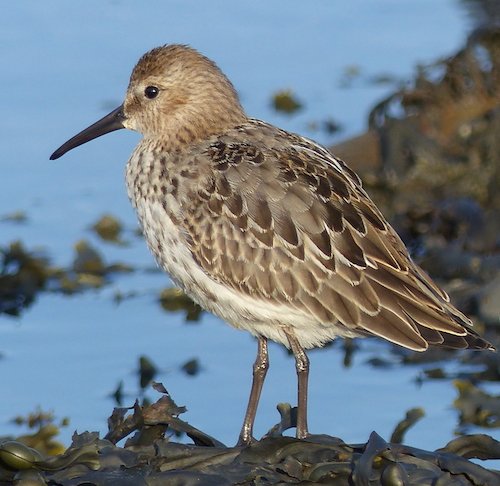
Birding County Galway
County Galway is a county in Ireland. It is located in the West of Ireland, part of the province of Connacht. There are several Irish-speaking areas in the west of the county. The traditional county includes, and is named for, the city of Galway, but the city and county now have separate local authorities: Galway City Council administers the urban area, while the rest of the county is administered by Galway County Council. The population of the county was 258,552 at the 2016 census.County Galway is home to Na Beanna Beola (Twelve Bens) mountain range, Na Sléibhte Mhám Toirc (the Maum Turk mountains), and the low mountains of Sliabh Echtghe (Slieve Aughty). The highest point in the county is one of the Twelve Bens, Benbaun, at 729m.County Galway is partly home to a number of Ireland’s largest lakes including Lough Corrib (the largest lake in the Republic of Ireland), Lough Derg and Lough Mask. The county is also home to a large number of smaller lakes, many of which are in the Connemara region. These include Lough Anaserd, Ardderry Lough, Aughrusbeg Lough, Ballycuirke Lough, Ballynahinch Lake, Lough Bofin, Lough Cutra, Derryclare Lough, Lough Fee, Glendollagh Lough, Lough Glenicmurrin, Lough Inagh, Kylemore Lough, Lettercraffroe Lough, Maumeen Lough, Lough Nafooey, Lough Rea, Ross Lake and Lough Shindilla.One of the least densely populated counties, County Galway harbors a variety of wildlife. The region’s biodiversity is best represented by Connemara National Park, situated in the west of the county.
Chris Peppiatt
BirdWatch Galway
Abbreviations Key
LNR Barna Wood
Np connemara, nr bishop's island (shannon callows reserve), nr coole-garryland, nr small wood, national parks & wildlife service, galwaybirdnews, 2003 [10 october] - graham gordon - aran isles, birds n bees eco lodge, birds galway, jeff l copner - a life at the shoreline.
Fatbirder - linking birders worldwide... Wildlife Travellers see our sister site: WAND
Bird Watching Dublin
New Bird Watching Sites added to the list in Dublin! There are now 48 different birding sites featured in Dublin! Visit Turvey Nature Reserve in North Dublin with an estuary, ponds, woodlandss and grasslands.
Dublin is the capital city of Ireland and it has dozens of places for birding and birdwatching enthusiasts . There are a surprising number of birdwatching locations where you can go bird watching in Dublin. Sea birds and harbour birds can be seen in Bull Island, Dun Laoghaire and the Great South Wall. There are also several small harbours along the Dublin coastline including Skerries, Rush and Colliemore harbour. Colliemore has a ferry service to Dalkey Island where you can also see seals, rabbits and a flock of wild goats!
Many of the public parks and parkland settings in Dublin provide surprising opportunities for birdwatching. Three substantial rivers run through Dublin city, the Liffey, the Dodder and the Tolka. All of them are important birding sites in Dublin.
Try to find some time to visit Blessington Street Basin. This is a beautiful park just a few hundred metres from Dublin city centre. Turvey Nature Reserve is one of the best sites in North Dublin to watch birds. It is a real gem located just a few Kilometres north of Swords. Broadmeadows Estuary , located between Swords and Malahide, is a hot spot in North Dublin. Browse through 47 galleries featuring the best bird watching sites in Dublin. You will see photographs of the different bird species that you can expect to see at each site. Detailed information is included about each location, including directions.
You will find information and directions to all of the birding sites in Dublin on the following page: Bird Watching Locations Ireland
The gallery below shows bird photography from 47 birding sites in Dublin city and county. Click on any of the images to find out more about each site and also to view the birds that were seen on each visit! If you would like to see galleries from bird watching locations in Leinster, click here: Birdwatching Leinster
Bird Watching Sites Dublin


IMAGES
COMMENTS
Cape Clear Island is one of the most interesting places in Ireland to bird watch. This small island off the coast of County Cork is a mecca for seabirds and unusual migratory birds. The potential of the island for birdwatching was spotted early on and there has been a bird observatory on the island since 1959 .
BINS Birding Tours - Small groups, individuals, target species etc. catered for. Itineraries designed for visiting birders. Contact: Eric Dempsey at BINS, 46 Claremont Court, Glasnvein, Dublin 11, Ireland. ... Birds Ireland is a company specialising in everything there is to know about Ireland's birds. Run by husband and wife team, Eric ...
A: The best Bird Watching in Ireland according to Viator travelers are: Dolphin and Whale Watching Tour from Dingle. Shore Excursion From Cork: Including Blarney Castle and Kinsale. Dingle Dolphin Blasket Adventures. Whale & Dolphin Watching Tour. Full-Day Private Bird Watching by Boat in Lough Corrib Galway.
Circumnavigate the entire Island of Ireland, visiting many of its key cities and villages, including Dublin, Wexford, Blarney, Dingle, Galway & Belfast. Visit world-famous Irish sites like Glendalough, Blarney Castle, Killarney National Park, The Cliffs of Moher, The Burren and The Giant's Causeway. Stay in a range of wonderful Irish lodgings ...
Birdwatching Ireland. Are you looking for information about Bird Watching in Ireland? You have come to the right place! You will find directions and parking information for 78 diverse Birding Sites in Ireland.Check out the names of the Top 30 Garden Birds in Ireland. Find all the information you need about Birding in Dublin and about birding locations in Ireland.
Check out reviews & photos of Ireland Bird Watching with increased safety measures & flexible booking. a Tripadvisor company. en / EUR € Top Ireland activities ... Explore the Irish countryside in County Galway during this nature-focused tour with a local birding guide. Cruise around the lake and keep an eye out for a wide species of birds.
According to Wild Bird World, there are 478 recorded species of birds across Ireland's 32,595 square miles. Skellig Islands. ... Though not on any of our trips currently, a visit to the reserve could be added to a private tour of Ireland, or perhaps onto a Self Guided trip through Ireland's Ancient East.
Bird watching in Ireland. Bird watching, or "birding" as many people who watch birds have come to call it these days, is perhaps the most popular form of wildlife observation in the world. Birds, by their very nature, tend to be more visible, noticeable and accessible than most other forms of wildlife. It's birds, more often than not ...
Saltee Islands, County Wexford. Lying just 5km off the coast of County Wexford and surrounded by crystal clear waters, the Saltees are two unoccupied islands that have become a haven for an impressive array of birds including gannets, puffins and Manx shearwaters. The islands are a popular stopping off point for birds migrating in autumn and ...
Guided Wildlife & Birdwatching Walks. € 25.00. Join me on the West Cork coast for a half-day guided wildlife and bird watching adventure exploring a range of coastal habitats around Rosscarbery. €25 per adult, €10 per child (10-16, accompanied by an adult under 10s free) — pay using cash or card at the end of your walk.
Ireland is home to more than 400 species of birds, making it a prime location for birdwatching enthusiasts. Here are some of IrishCentral's favorite locations for birdwatching in Ireland.
Overview. Go with an expert bird weather on this exploratory cruise in Lough Corrib to find birds you wouldn't be able to spot on your own. Your guide will point out birds to you and also help to identify various bird calls. Learn how the bird selection varies throughout the year. Relax along the boat as you pass castles, ancient settlements ...
Ireland. Ireland. County Wexford - Waders Galore! 6th Sep 2024 - 12th Sep 2024. 3 SPACES. GUARANTEED DEPARTURE. ... Oriole Birding is a UK based birdwatching tour company specialising in small group holidays throughout the UK and to over 30 countries worldwide
Day 3: Mon 2 September - Seabird and Whale watching boat trip. Seabirds are an exciting aspect of birding in Southern Ireland, and we take a boat trip out into the Atlantic hoping to connect. These waters can be great for cetaceans too, and travelling up to 5 miles offshore we target both birds, whales and dolphins.
Scotland and Ireland - Birding Tour. Tour Overview: Scotland is an ancient land filled with thick Caledonian pine forests, towering mountains, deep black lochs, great whiskey, and castles straight out of Braveheart. This tour takes us to all of these and more with a route that includes the scenic western Isle of Skye and the beautiful Hebridean ...
For a long time, watching birds was sometimes considered a weird pastime of medieval men in khaki shorts, but the hobby is not only gaining new popularity, but also a certain hip touch. So in this post, we investigate birdwatching in Ireland and introduce seven of the most beautiful bird species in Ireland. 1. Puffin. Puffin.
Dublin is the capital city of Ireland and it has dozens of places for birding and birdwatching enthusiasts. There are a surprising number of birdwatching locations where you can go bird watching in Dublin. Sea birds and harbour birds can be seen in Bull Island, Dun Laoghaire and the Great South Wall. There are also several small harbours along ...
Website. BirdWatch Galway is the Galway City and County branch of BirdWatch Ireland. Once known as the Irish Wildbird Conservancy (IWC); BirdWatch Ireland is the Irish partner of Birdlife International. BirdWatch Ireland is the largest and most active voluntary conservation organisation in Ireland. Established in 1968, it has over 7,000 active ...
Bird Watching Dublin. New Bird Watching Sites added to the list in Dublin! There are now 48 different birding sites featured in Dublin! Visit Turvey Nature Reservein North Dublin with an estuary, ponds, woodlandss and grasslands.. Dublin is the capital city of Ireland and it has dozens of places for birding and birdwatching enthusiasts.There are a surprising number of birdwatching locations ...
Killarney. 8 hrs. Relax and enjoy the beautiful route while our professional driver takes you through some of the most beautiful sceneries and towns in the area. The drive from Cork to Killarney takes about 1.5 hours, but there are several sightseeing stops planned on the way.
The Ireland travel packages by Firebird Tours are crafted by destination experts and as always include the best features. Stay at central 4 or 5-star hotels, enjoy private airport transfers, time-saving connections between the visited destinations, as well as sightseeing tours with professional guides and exciting activities such as boat rides ...
Private tour to Ireland. Treat yourself with seven days private tour to legendary Ireland. You will have a fantastic time while exploring four cities, including Dublin, Cork, Killarney & Galway. Don't hesitate to dive into Irish culture and history! 7 days 4 cities. 1 country. From. $ 3,628. View Prices.
Ireland is home to countless the most outstanding landscapes in the world. Take a chance to see the natural gems and historical treasures of the Irish cities in a private guided tour of Ireland.Our private tours of Ireland are created by destination experts and combine great sightseeing with local professional guides, comfortable accommodations, and smooth logistics.